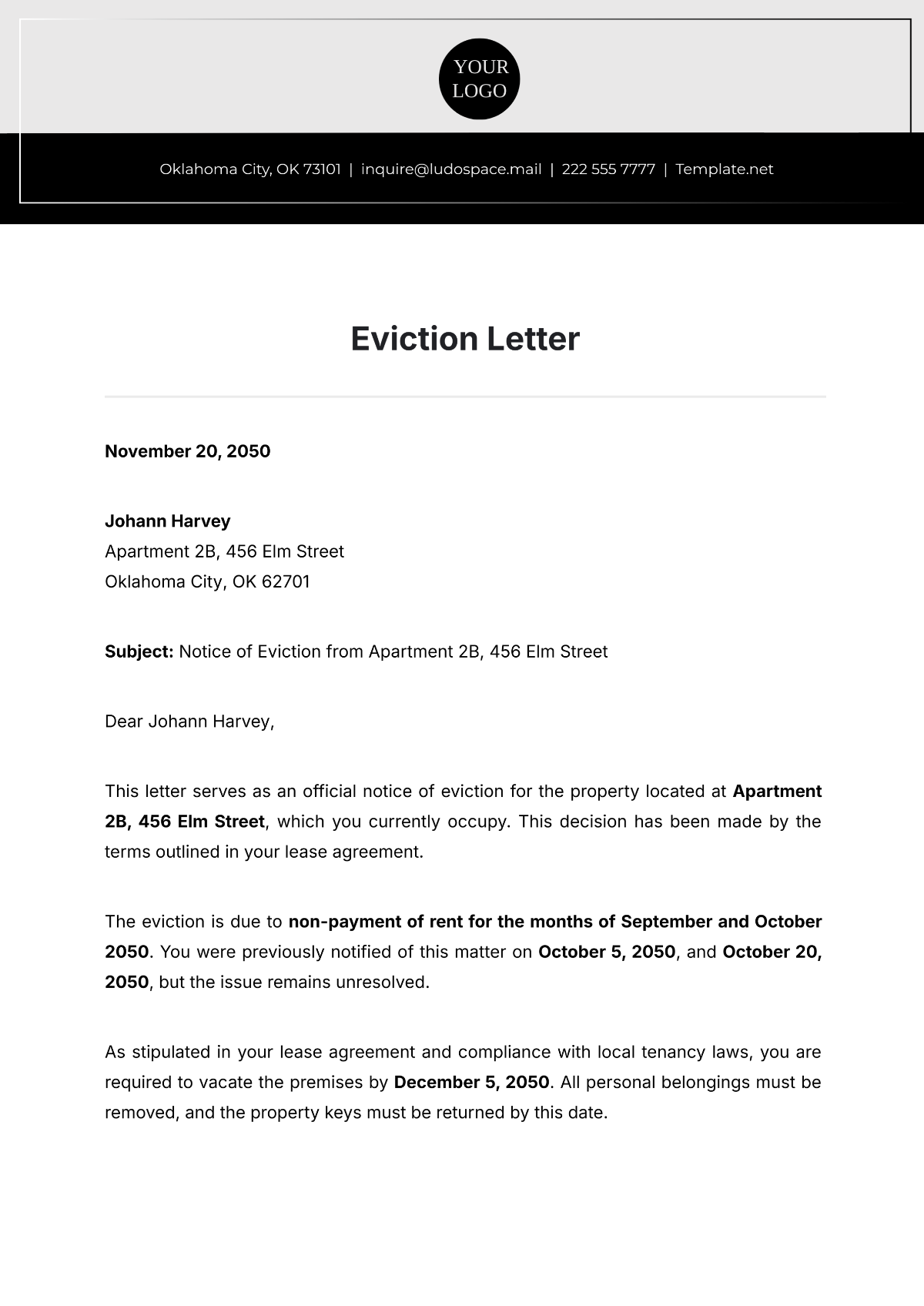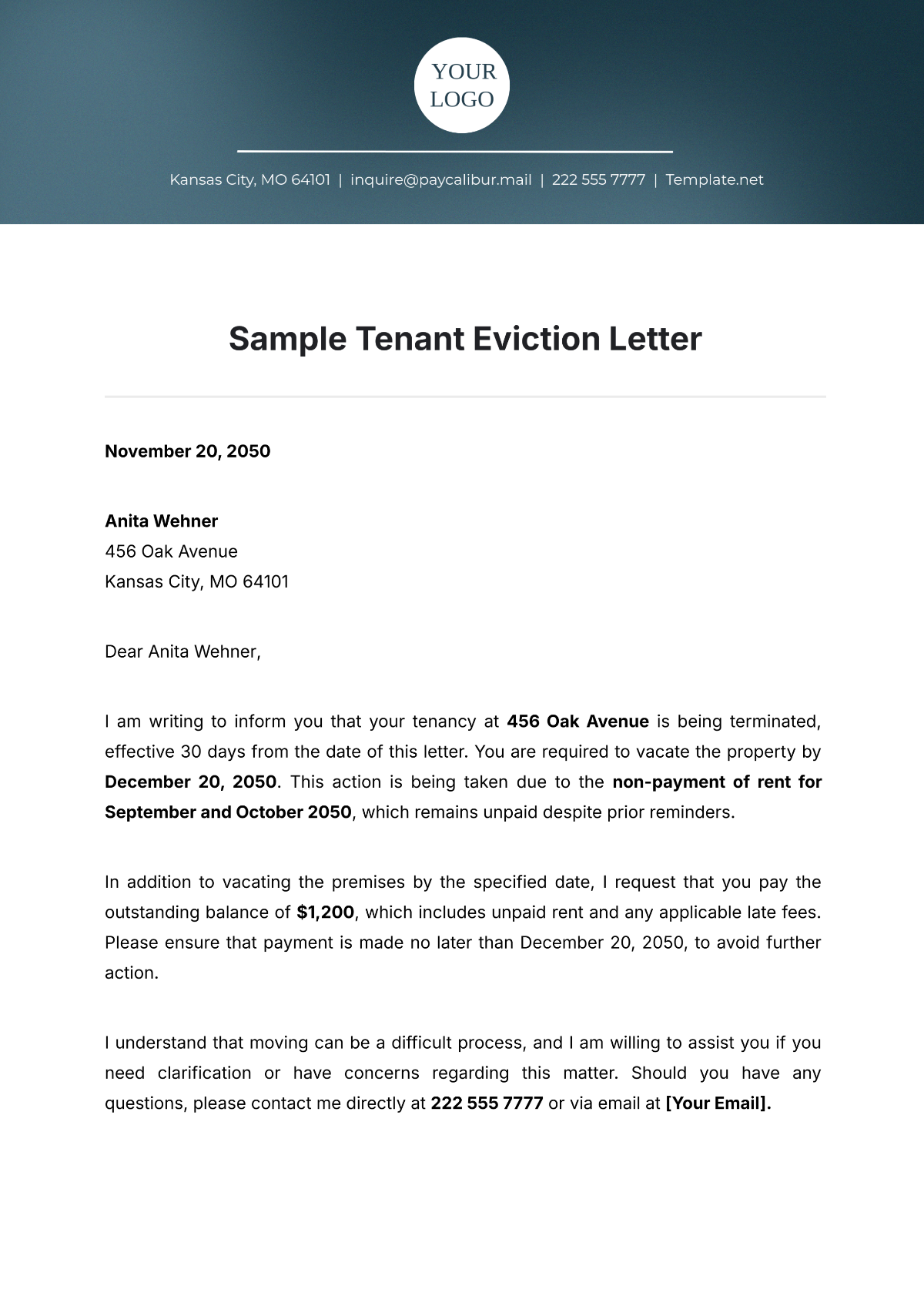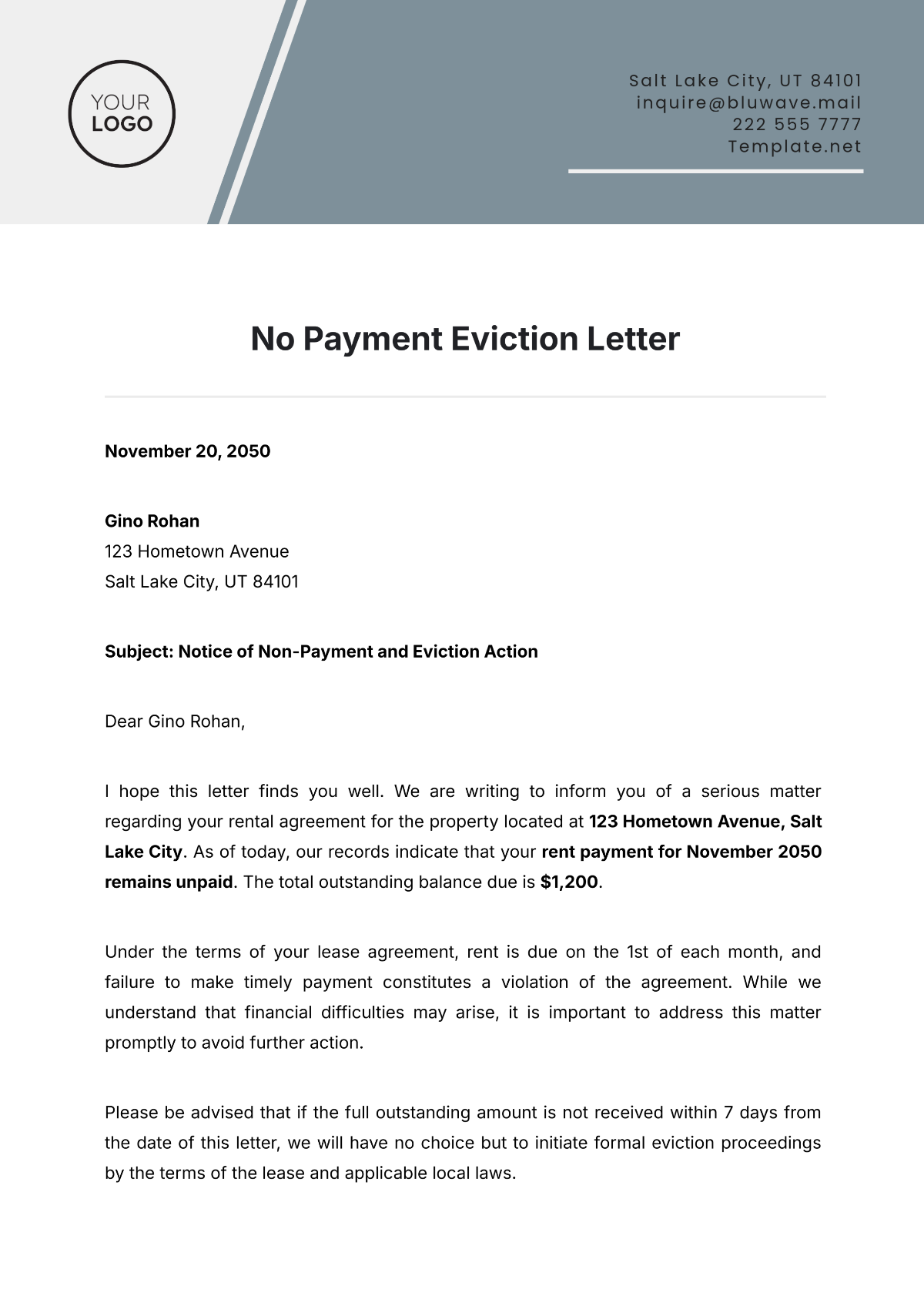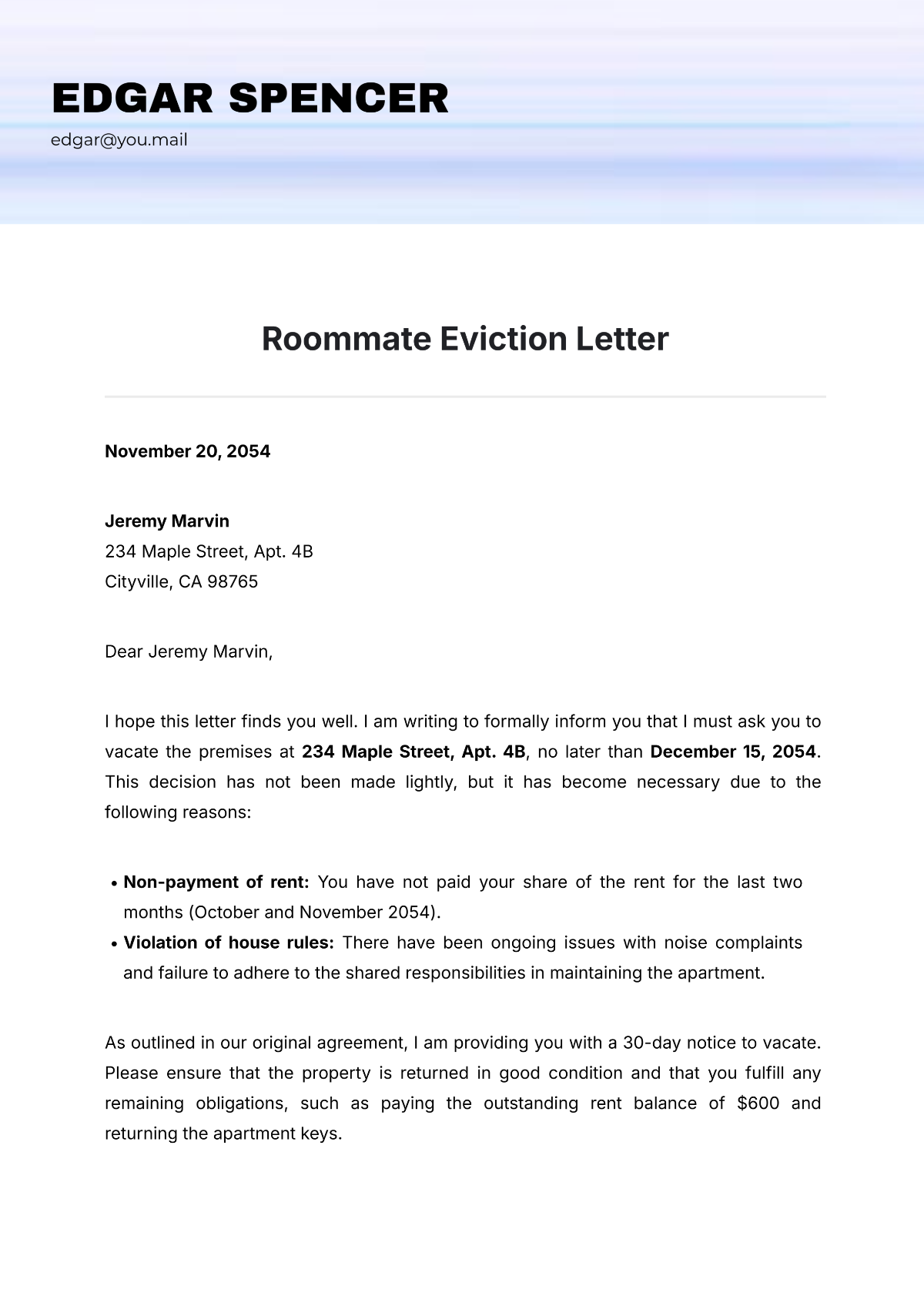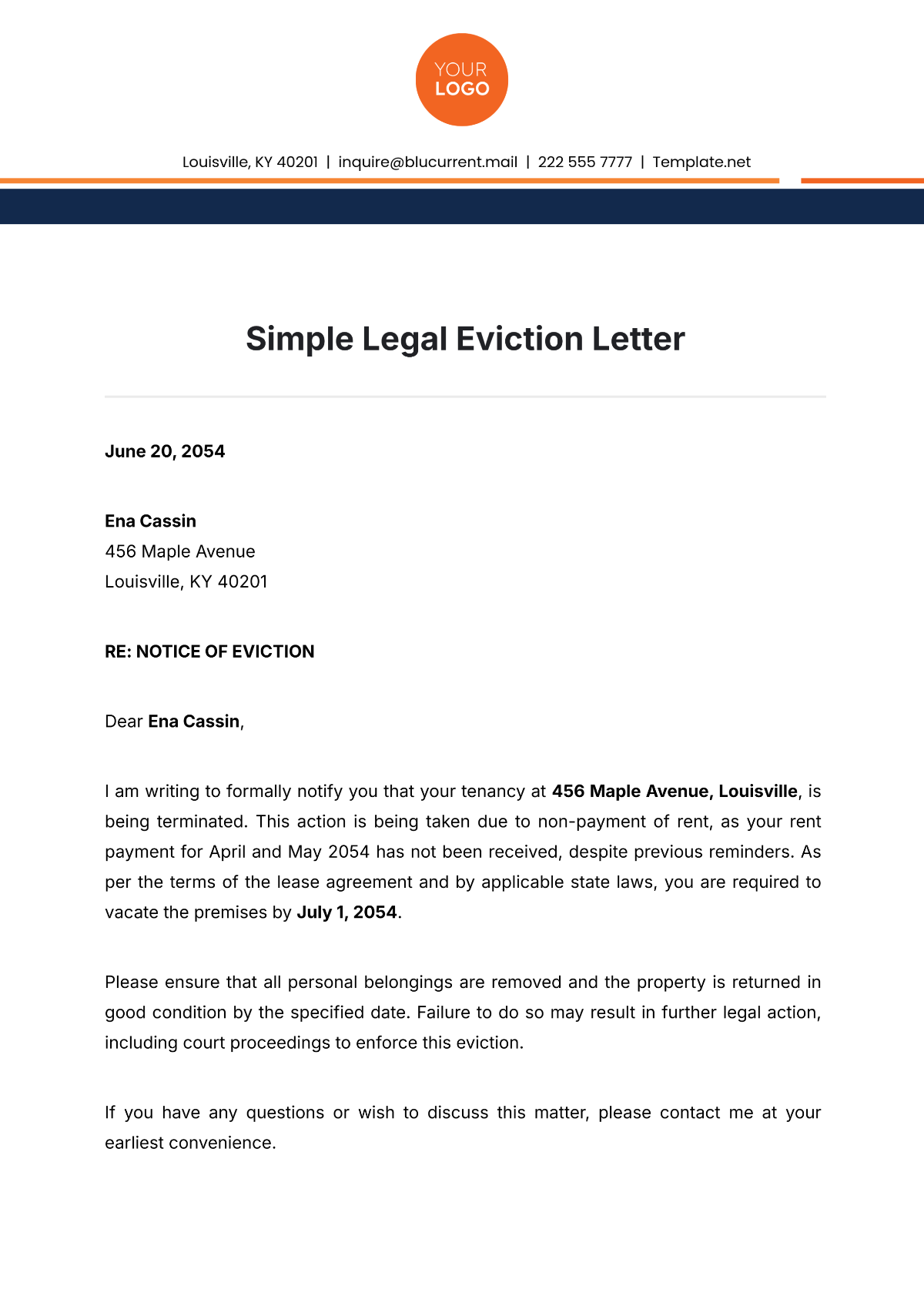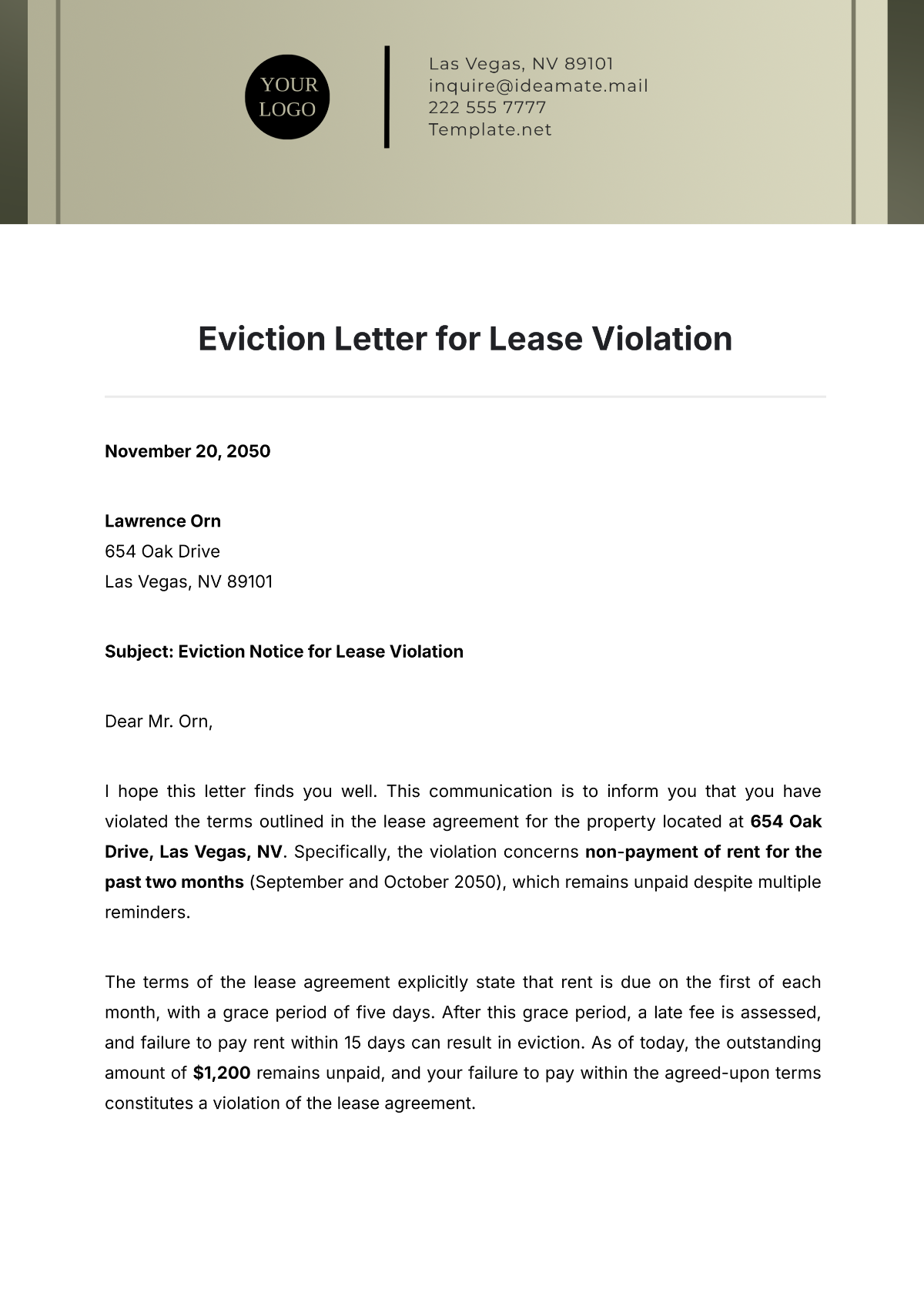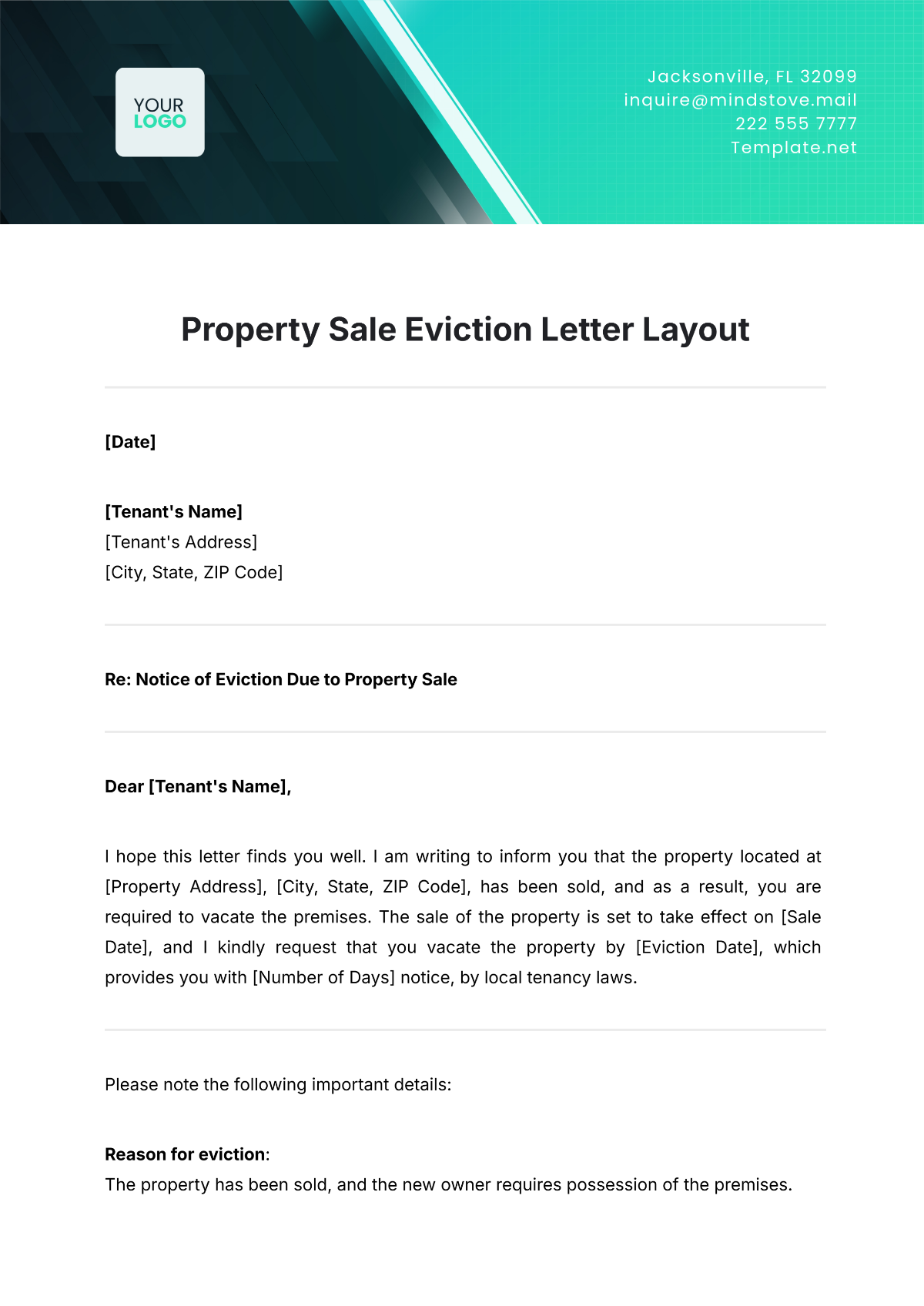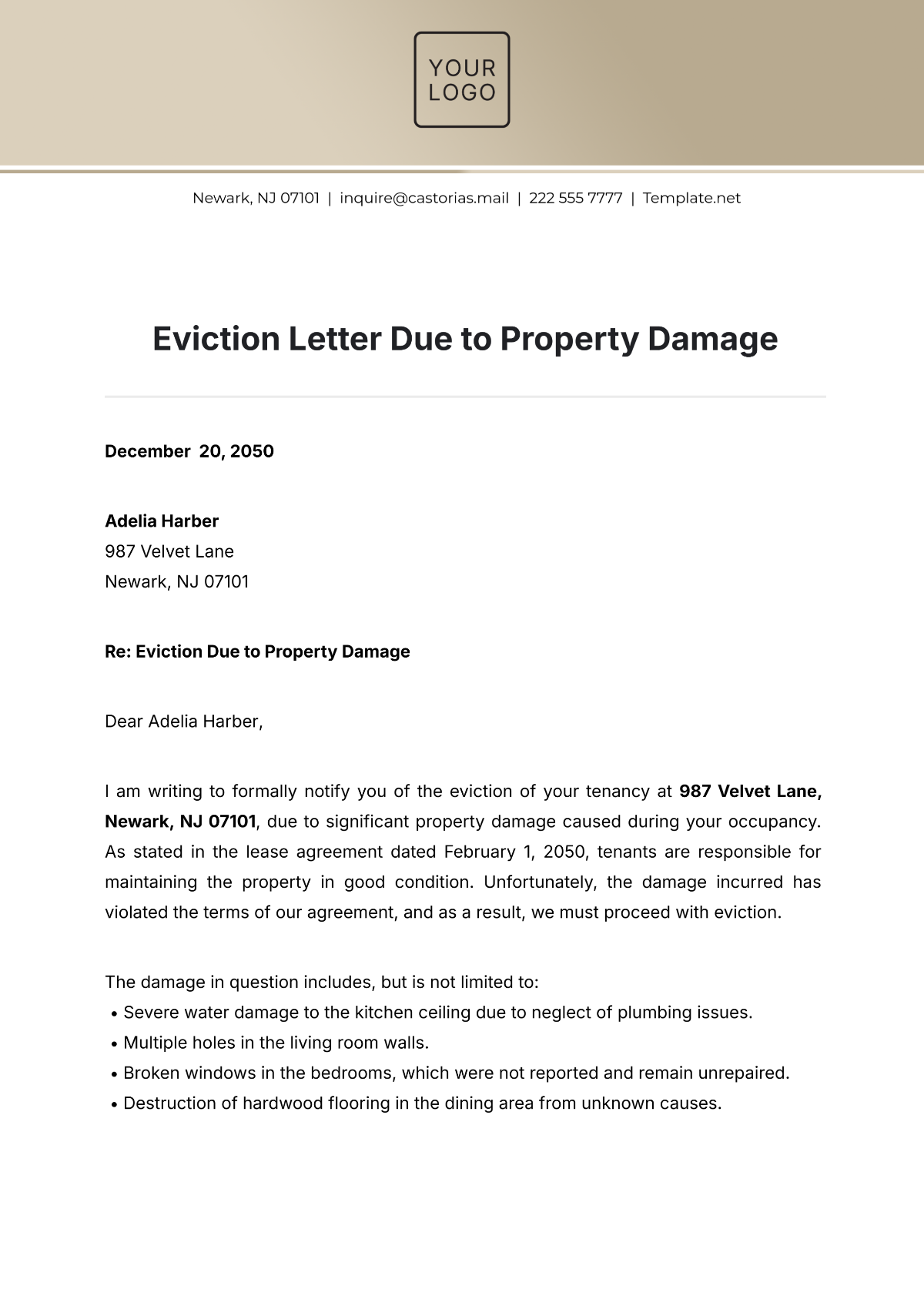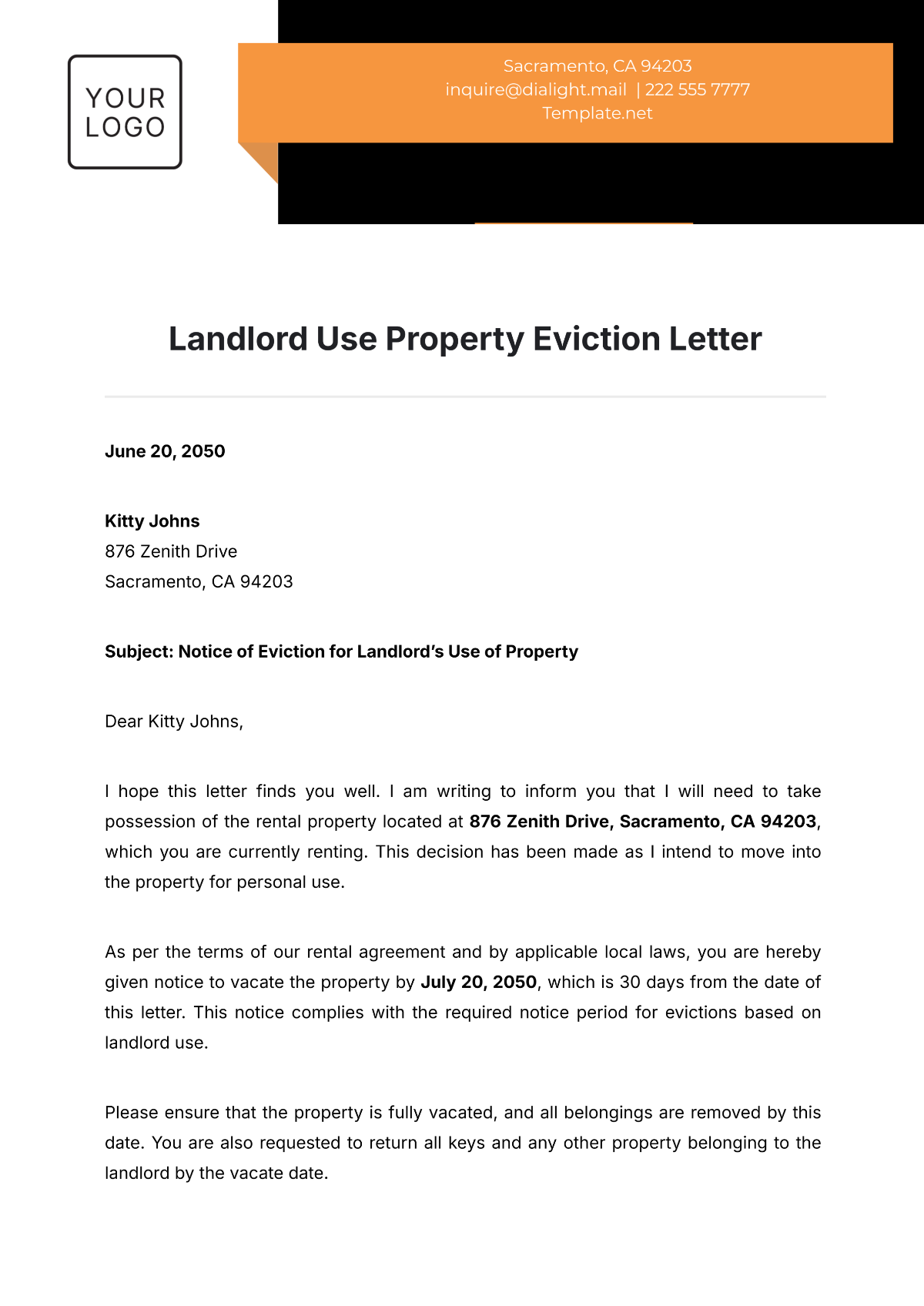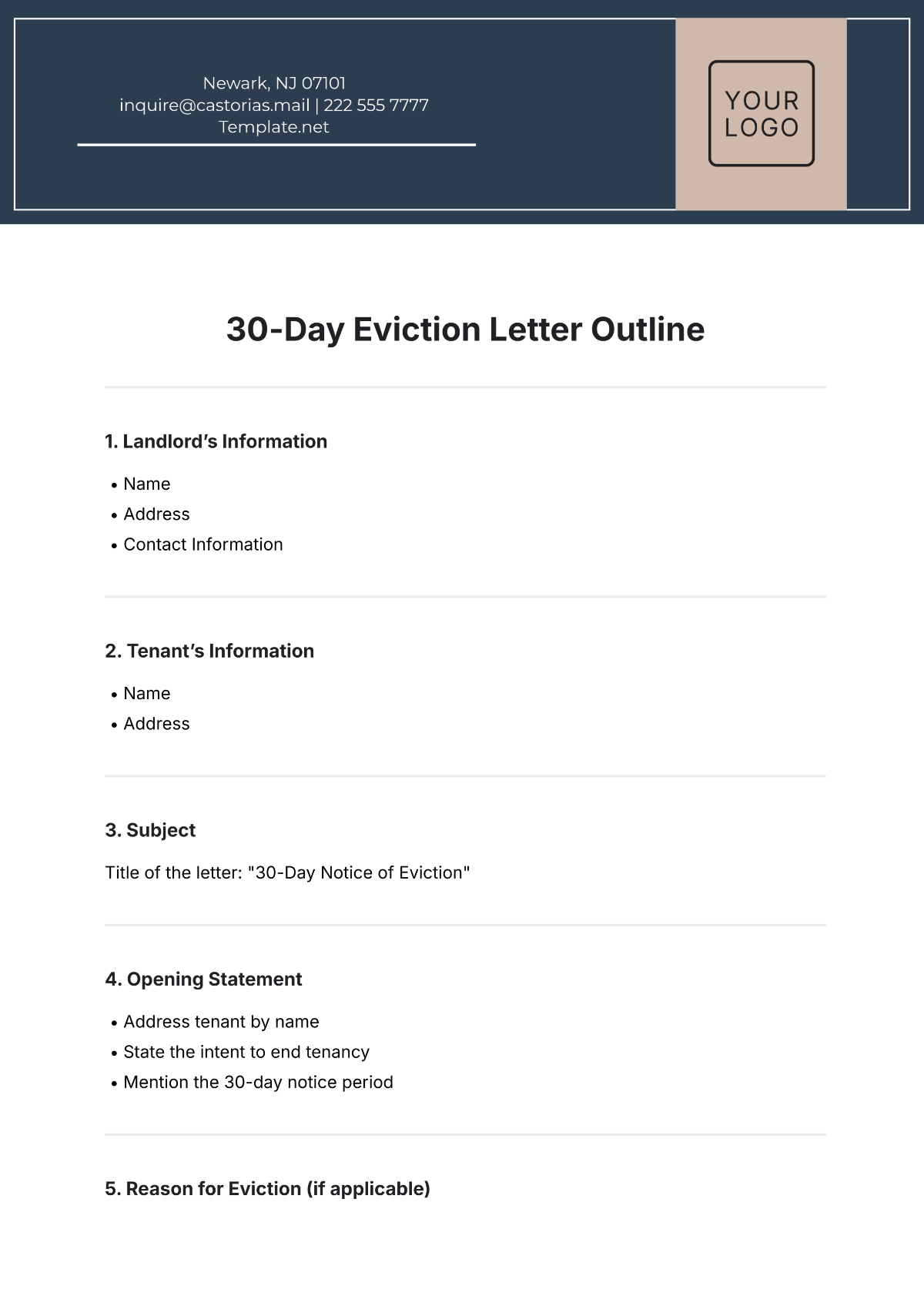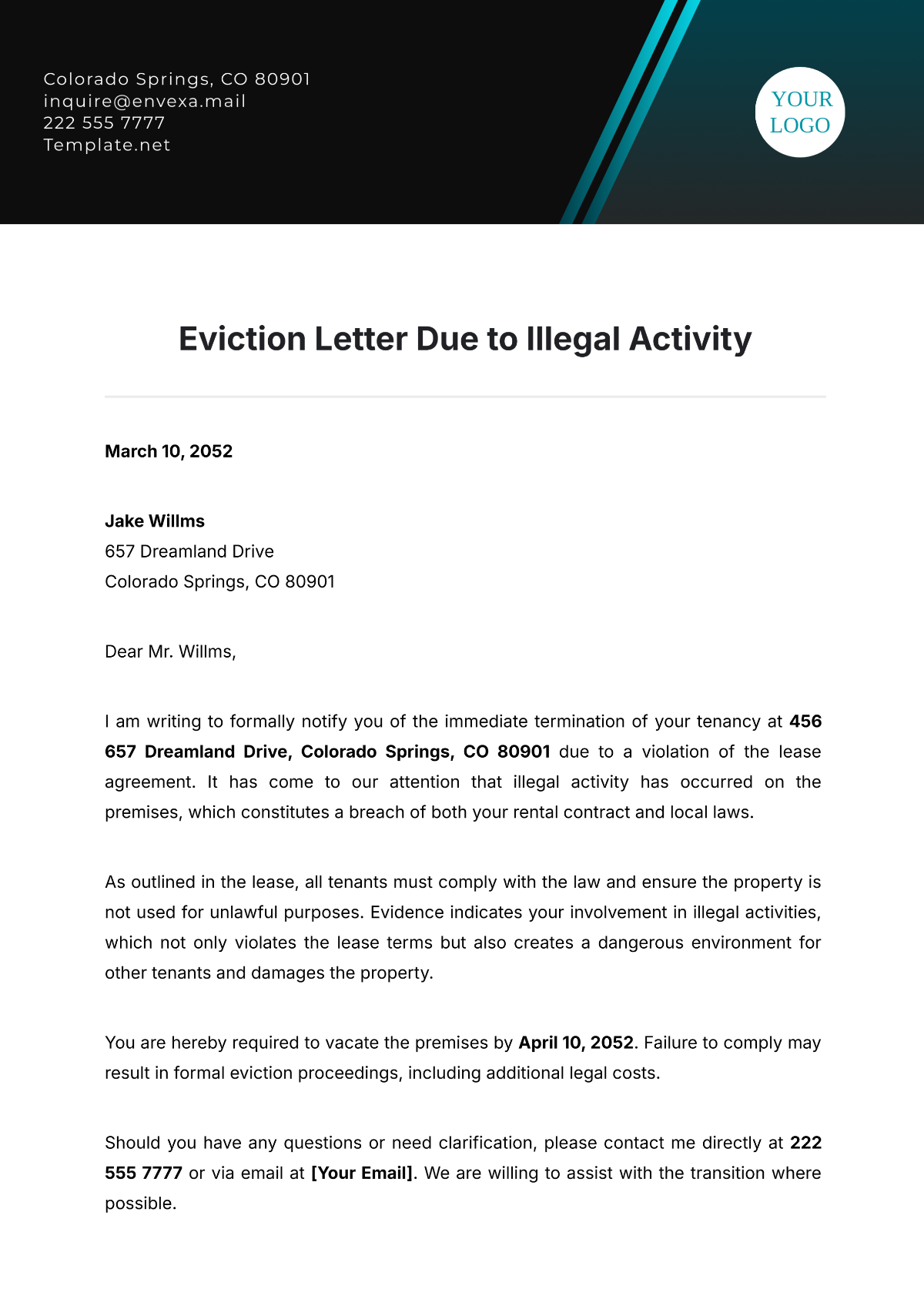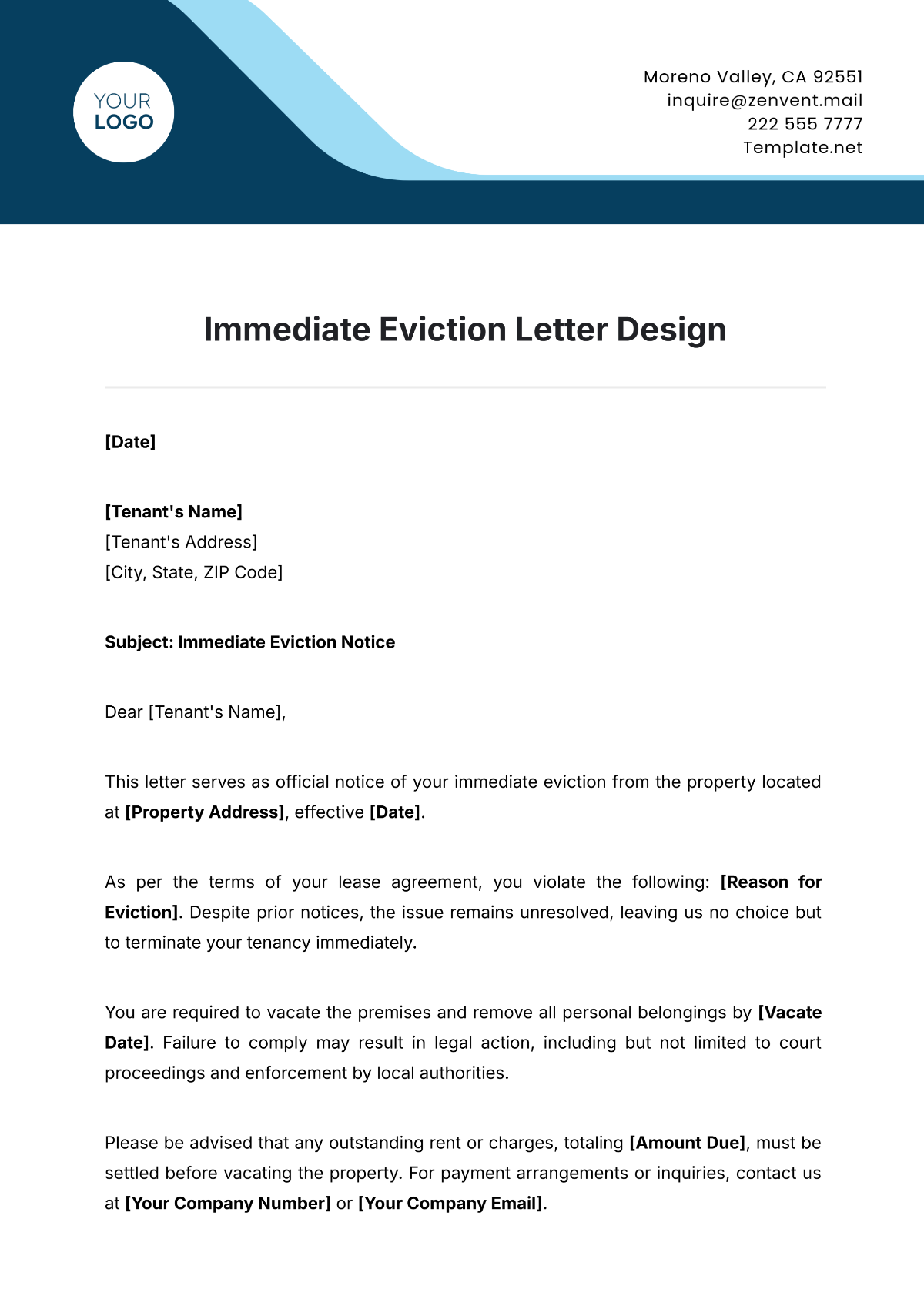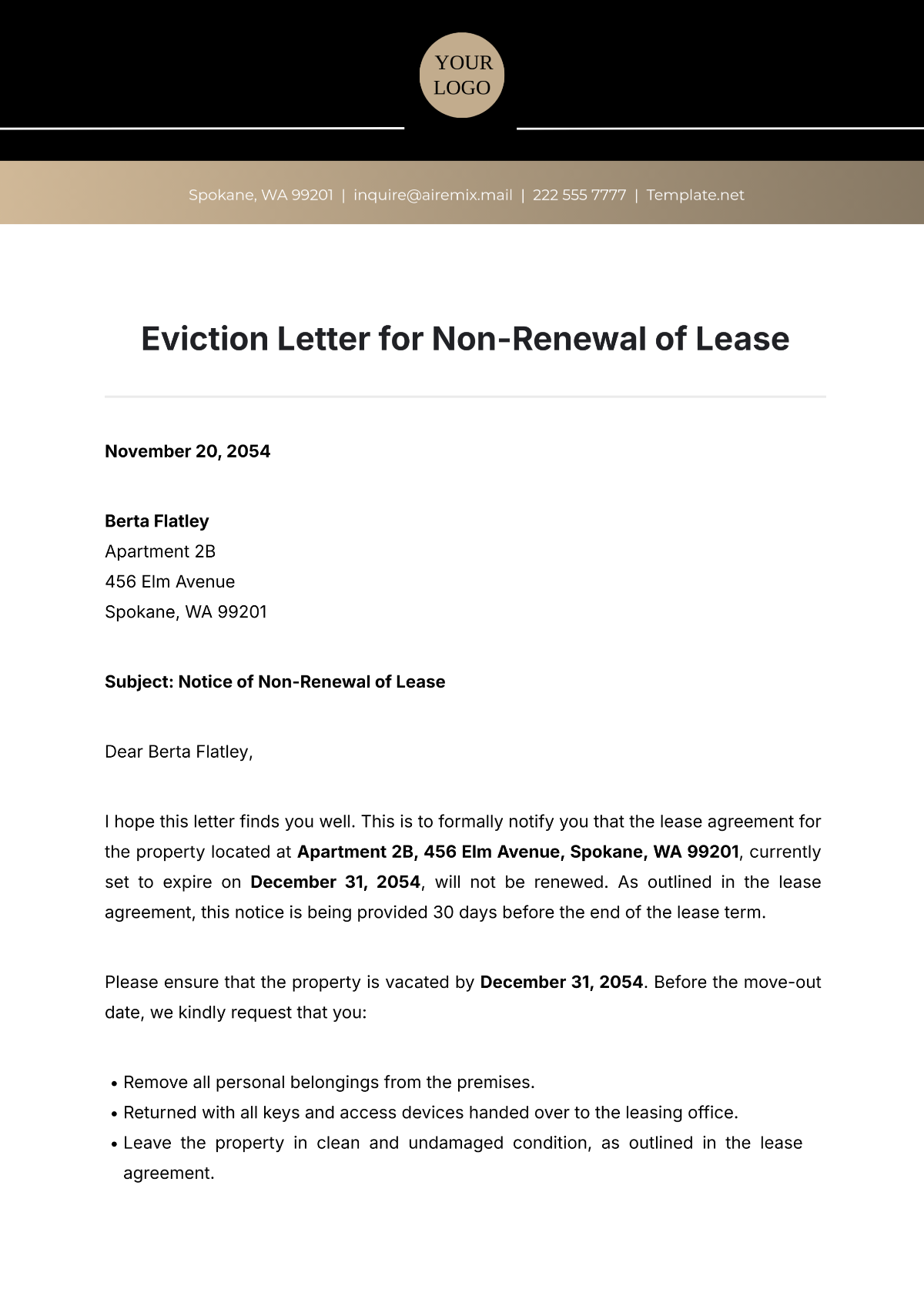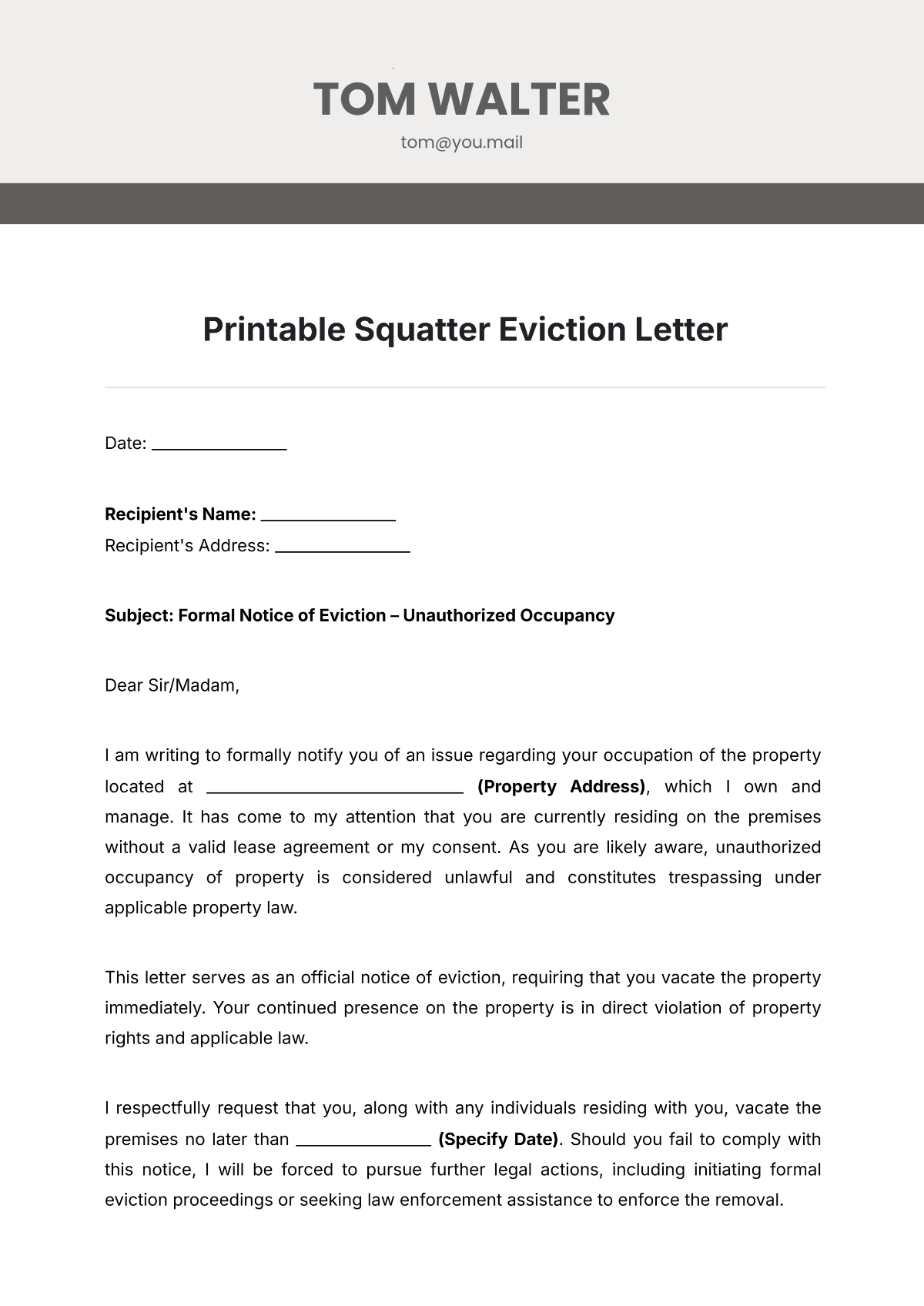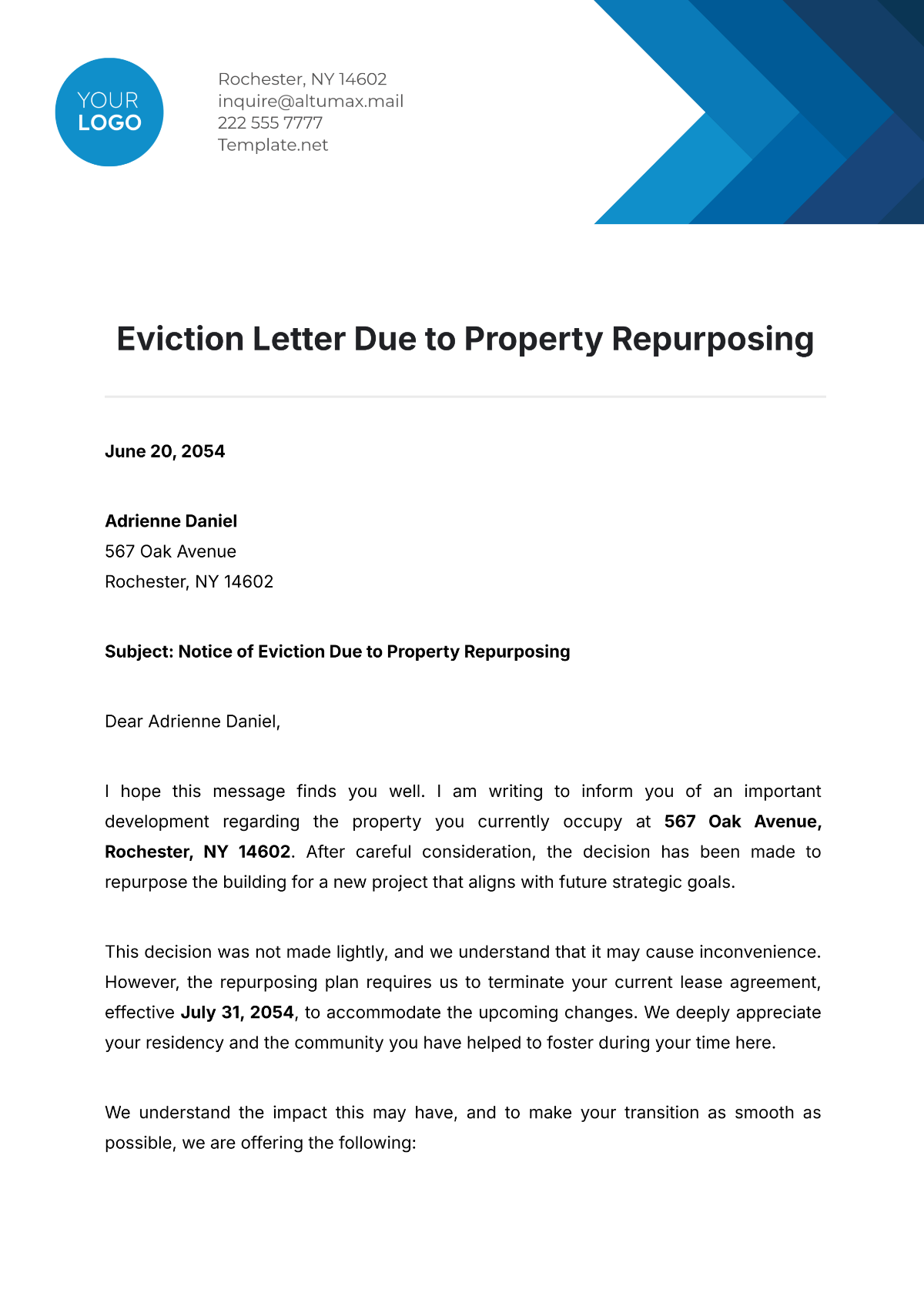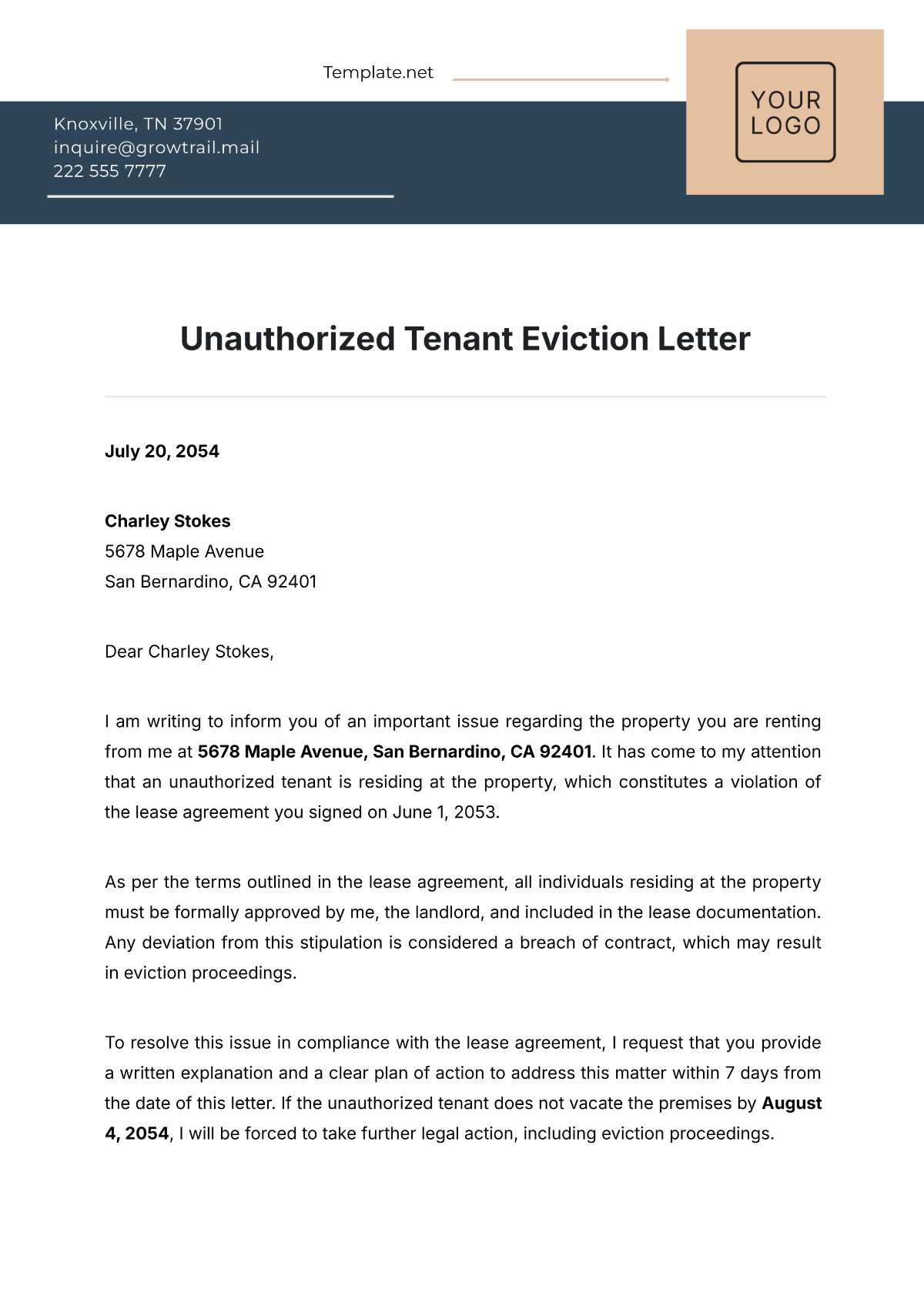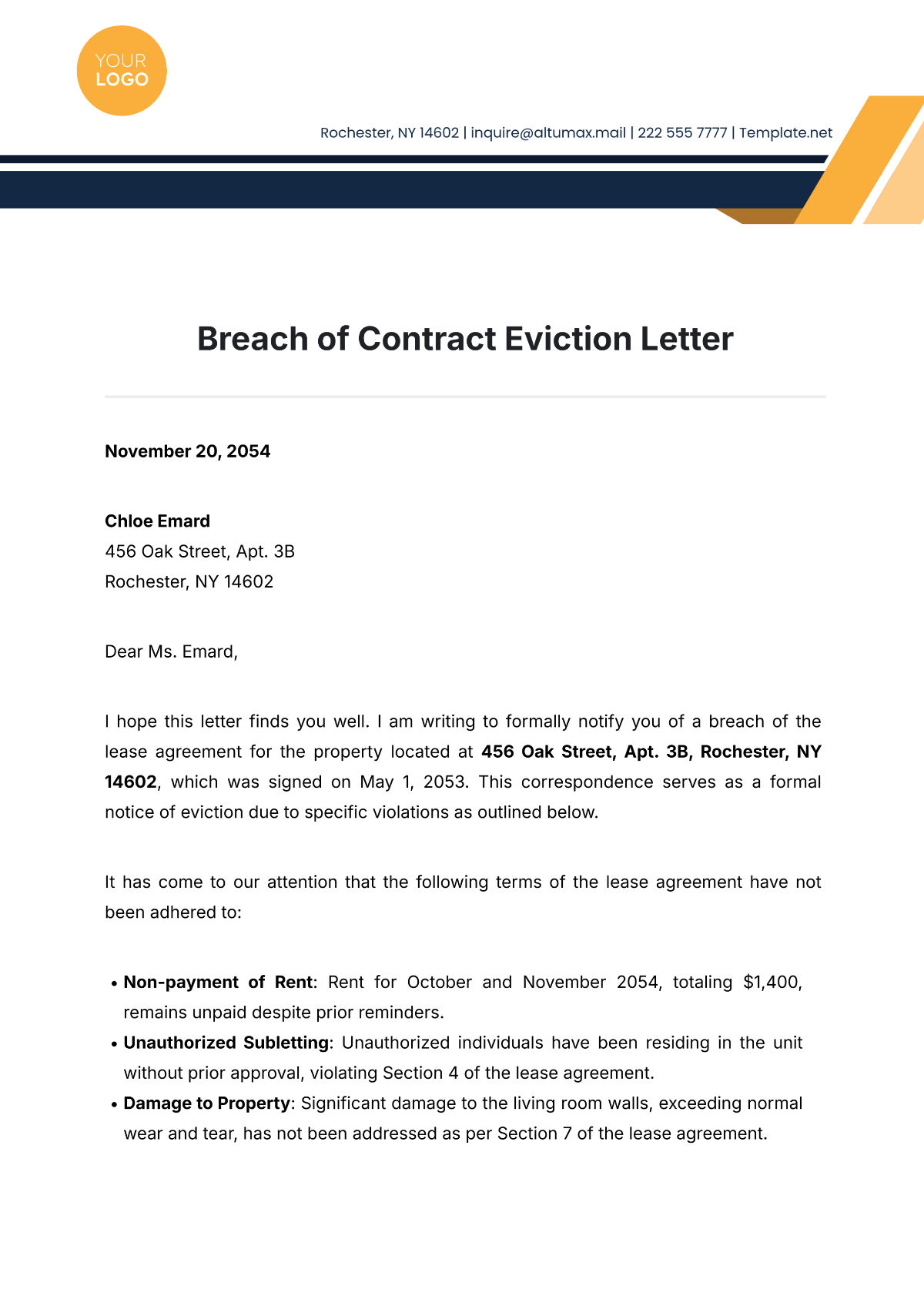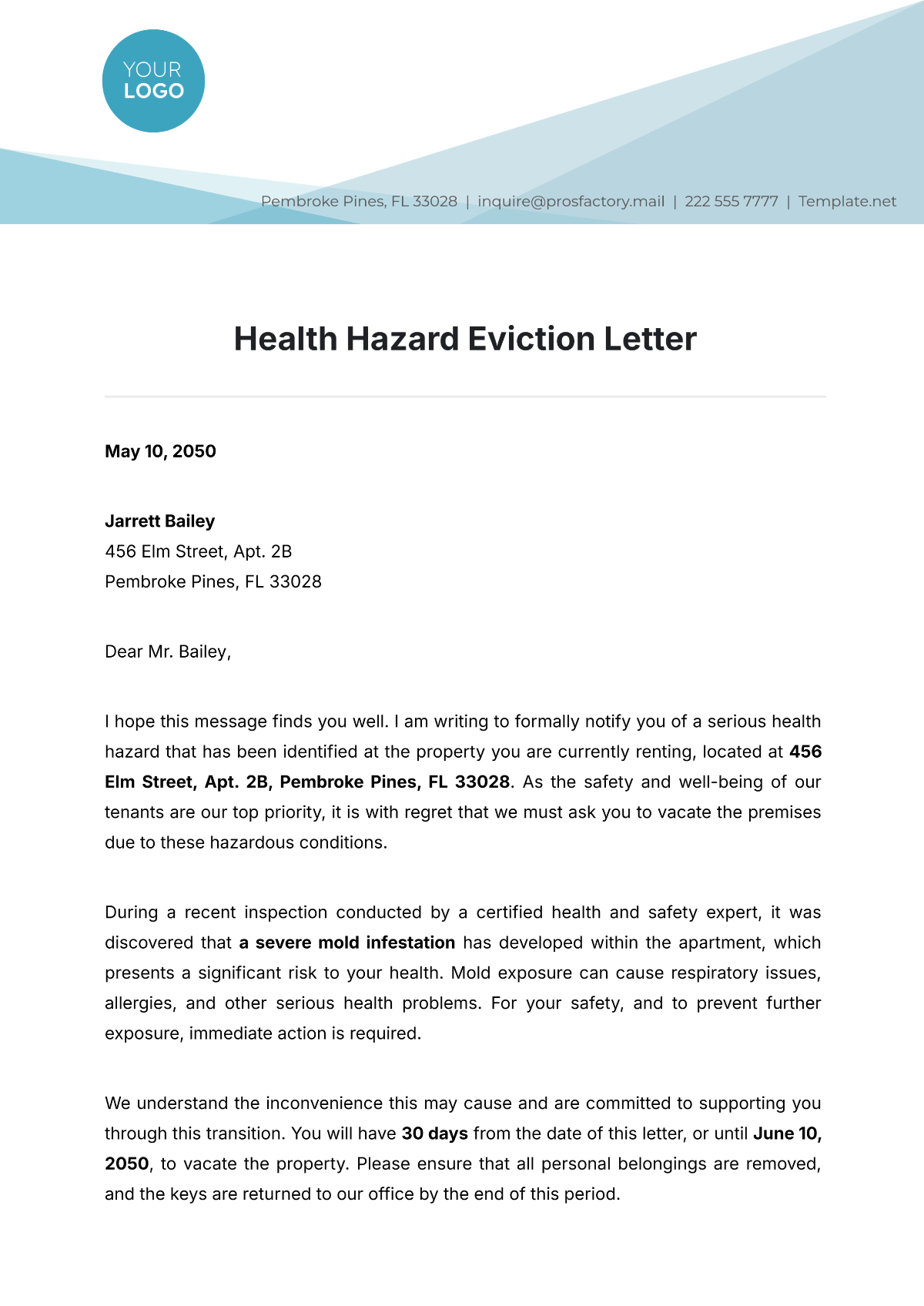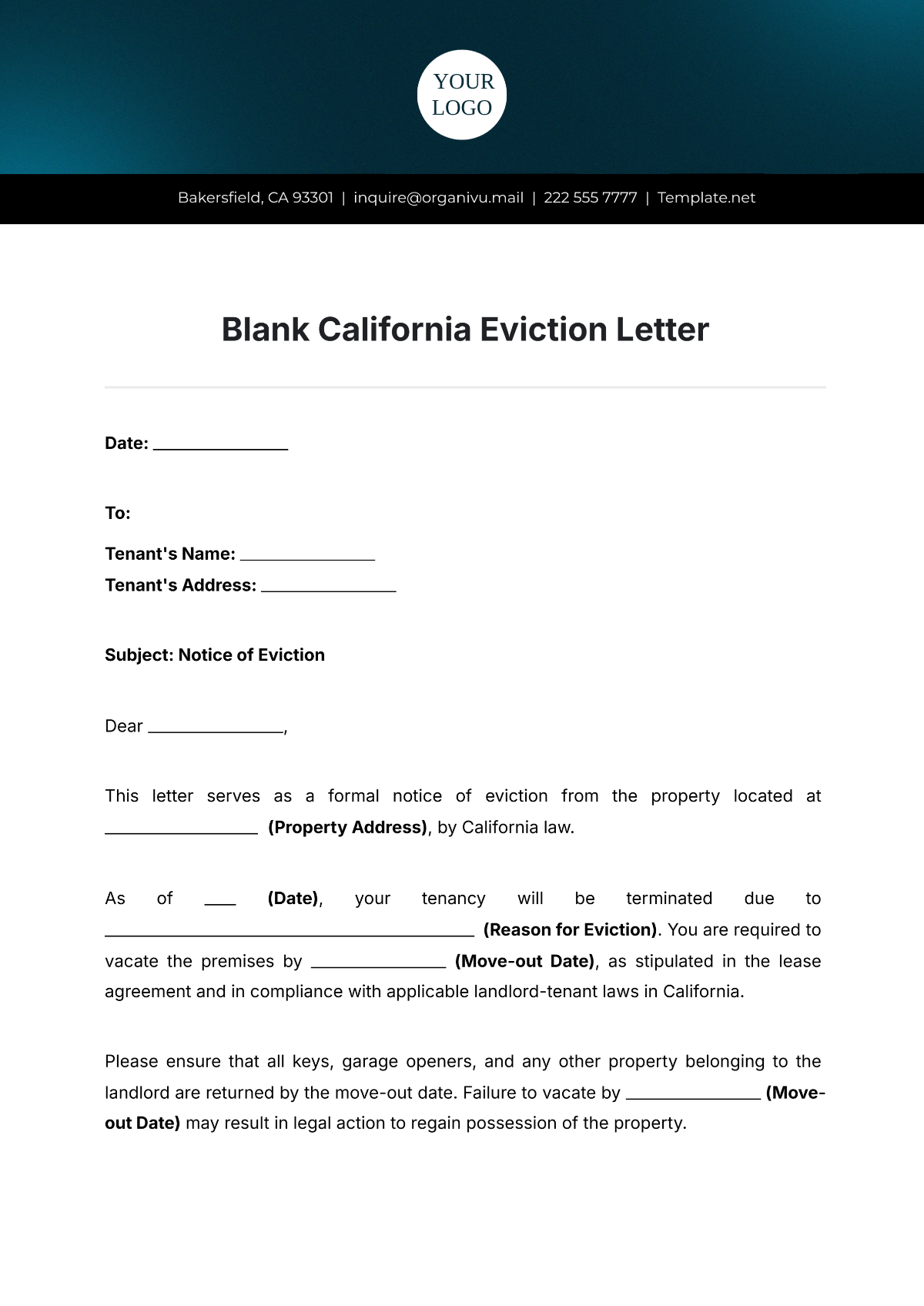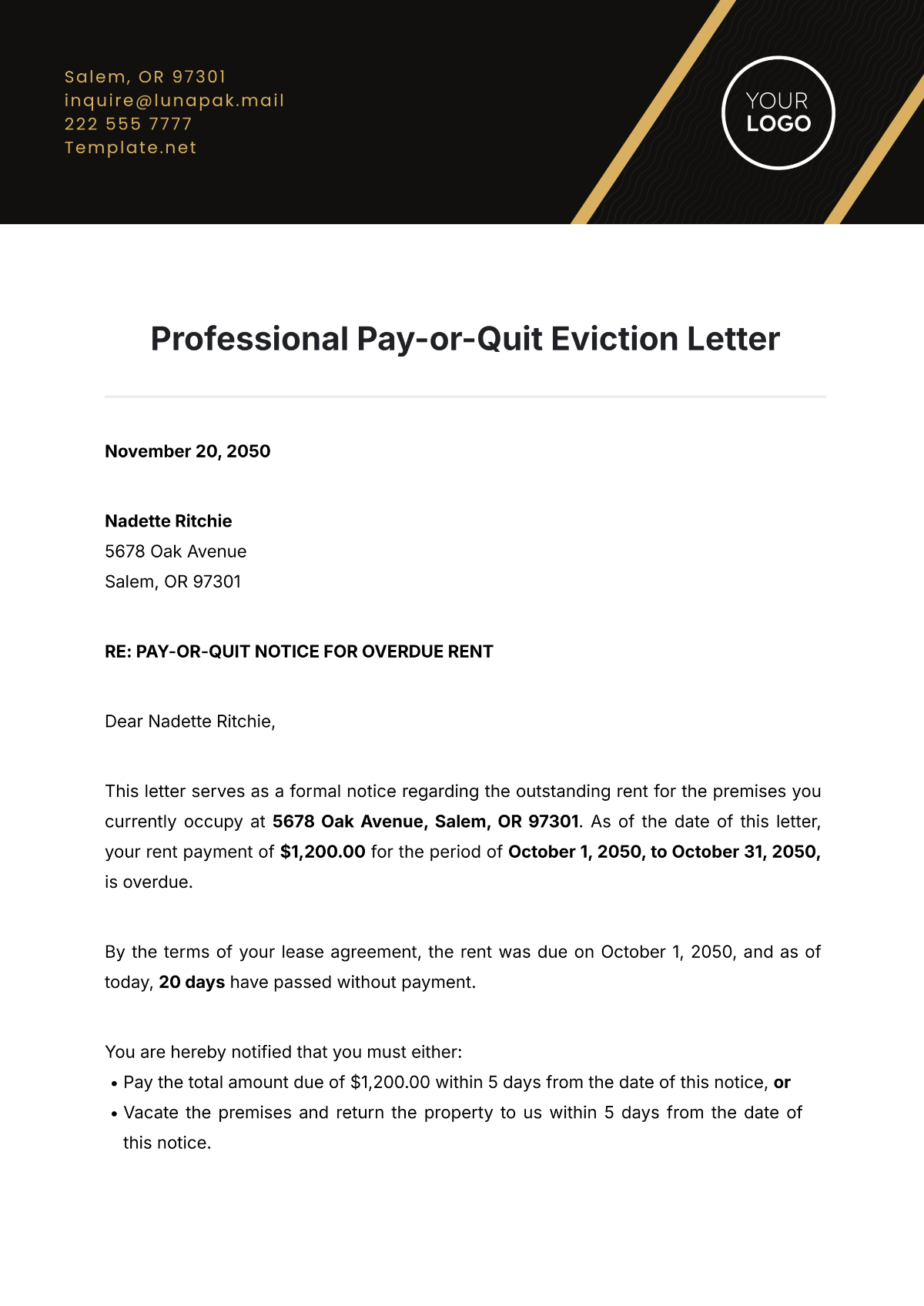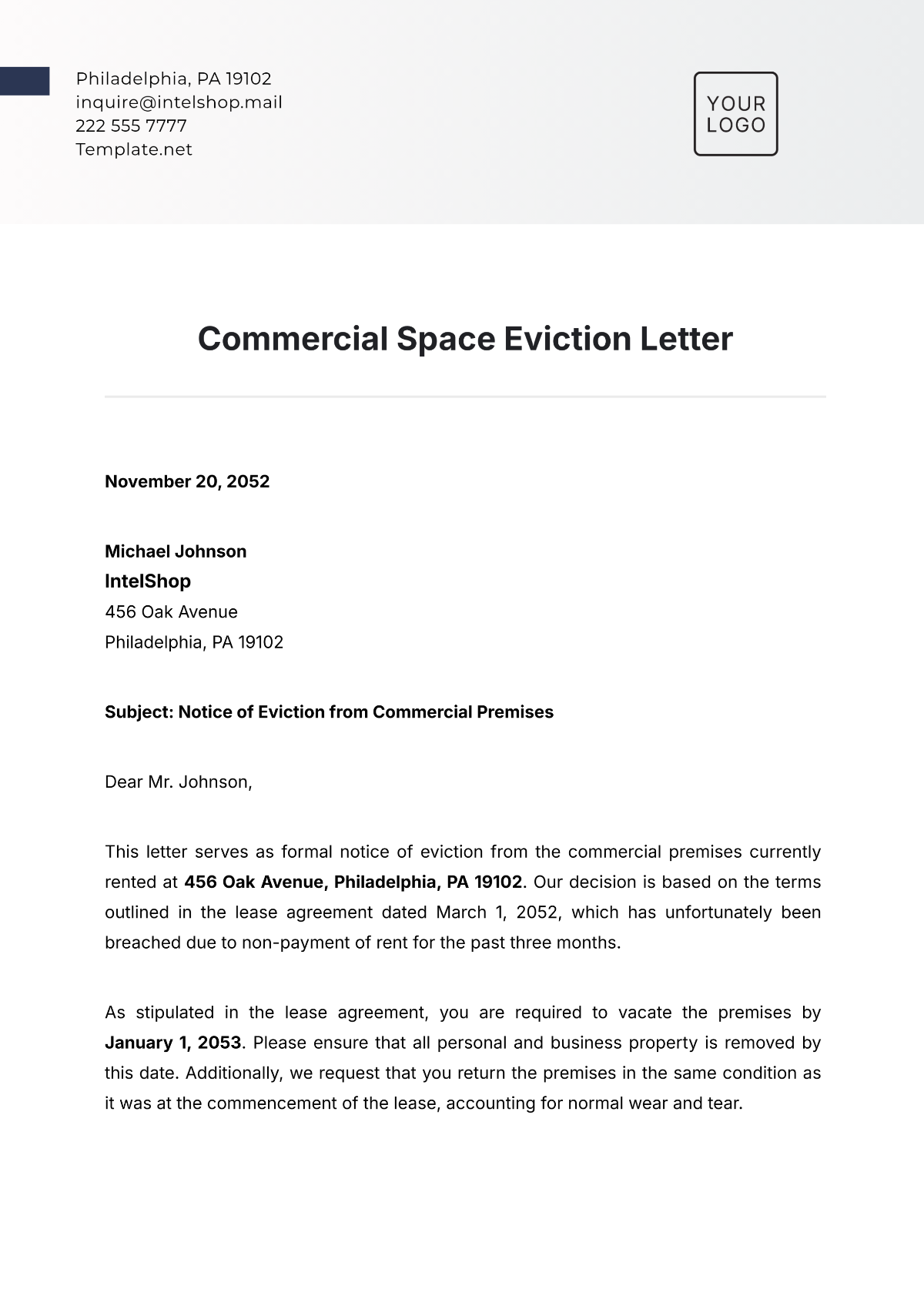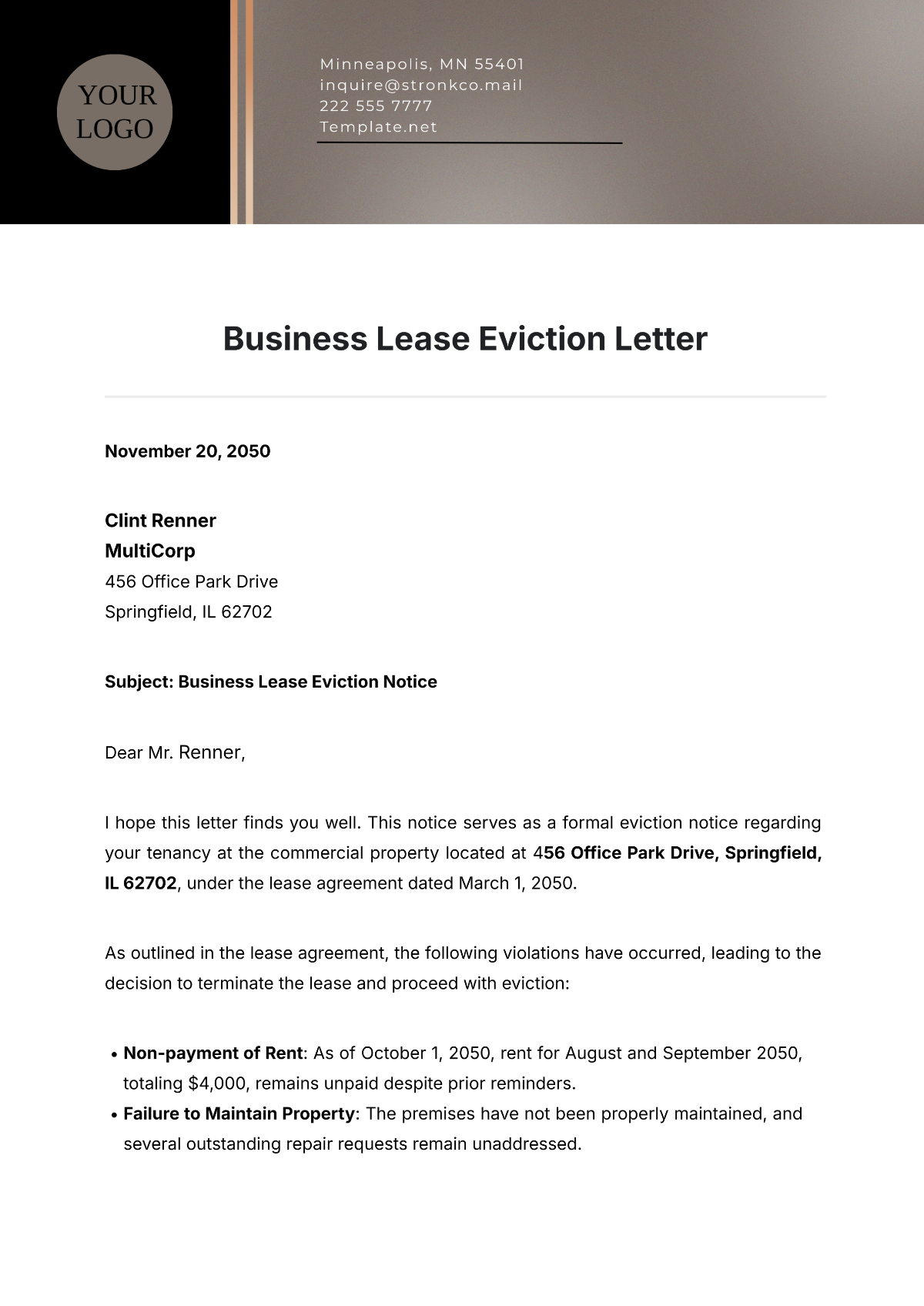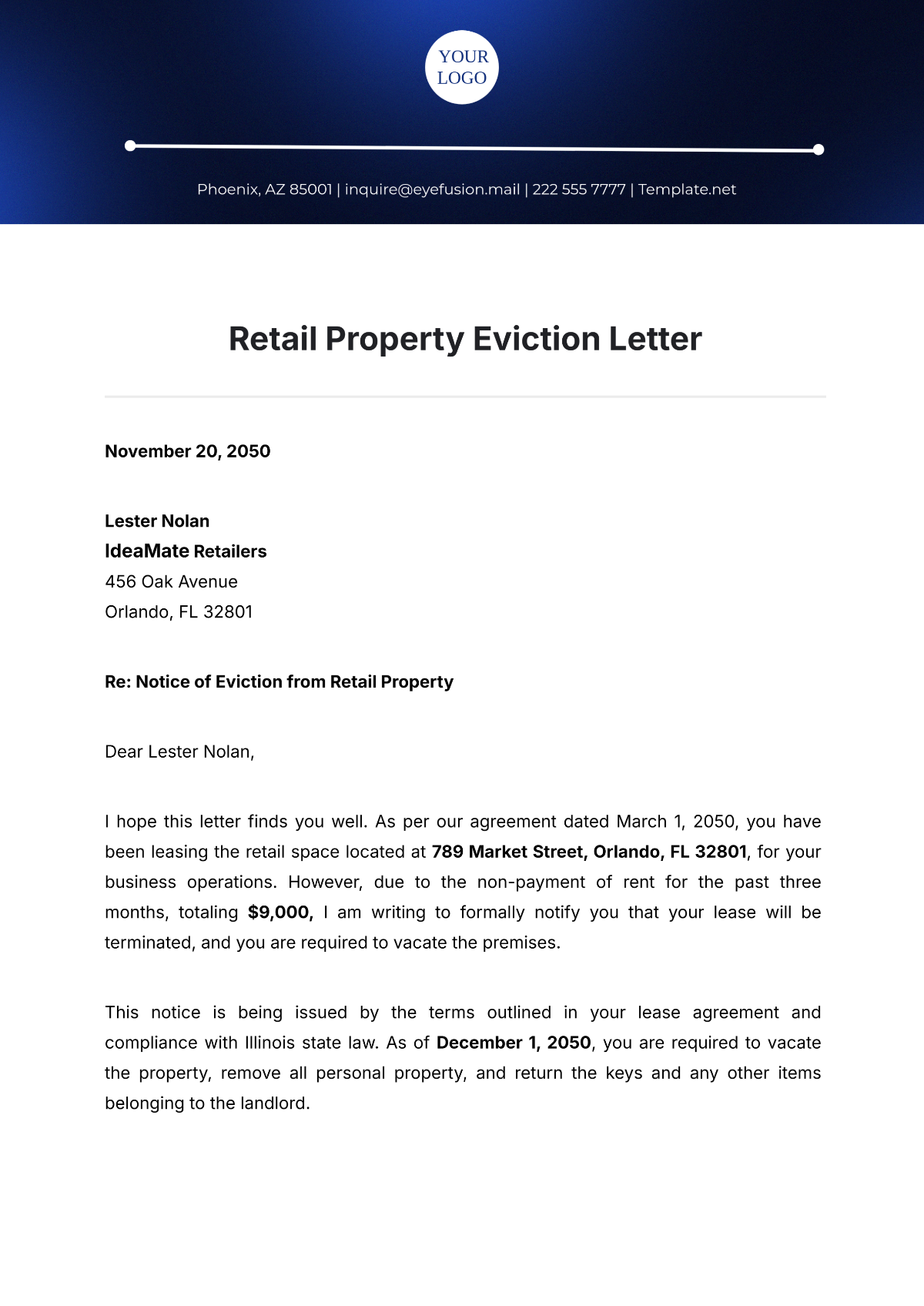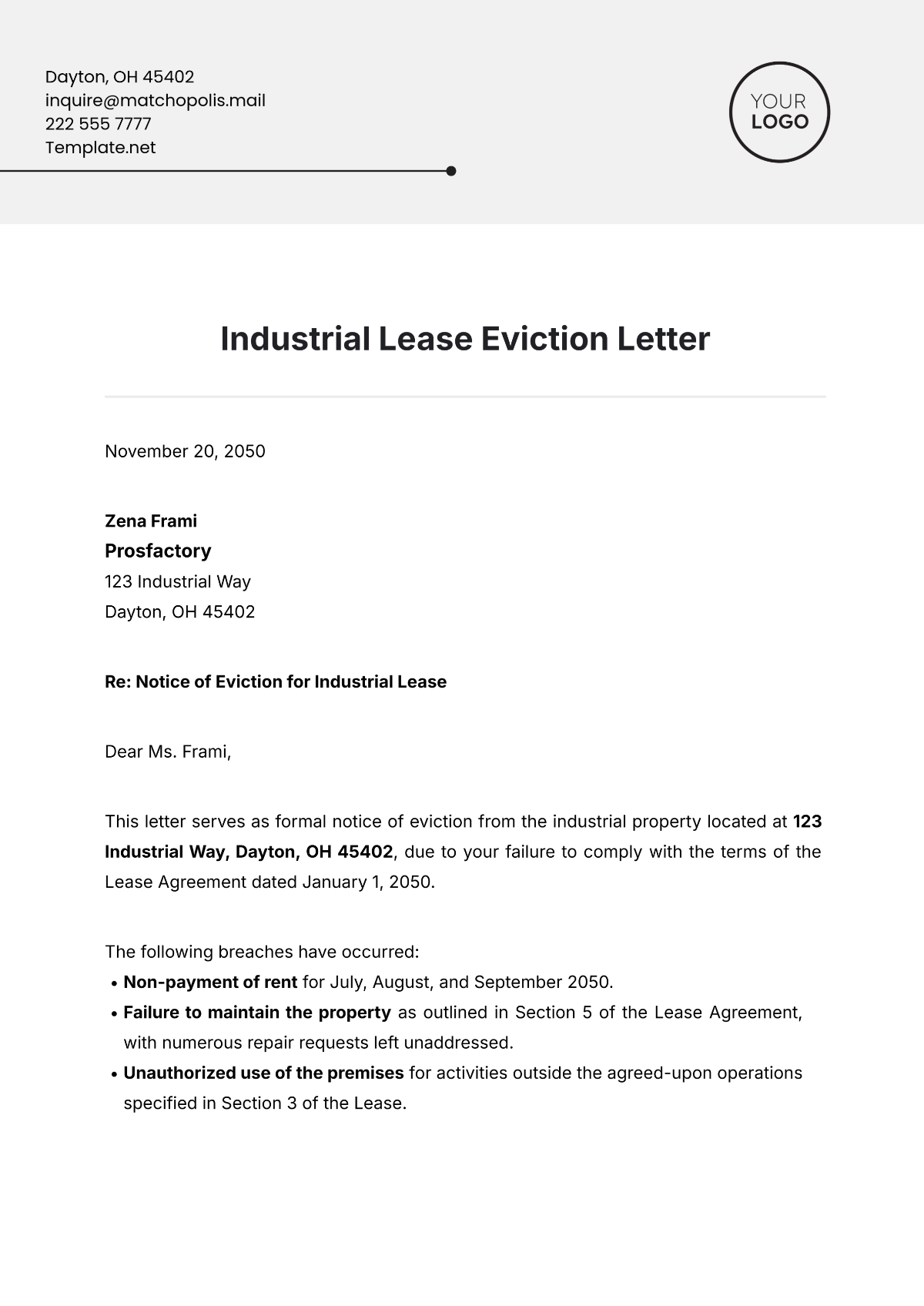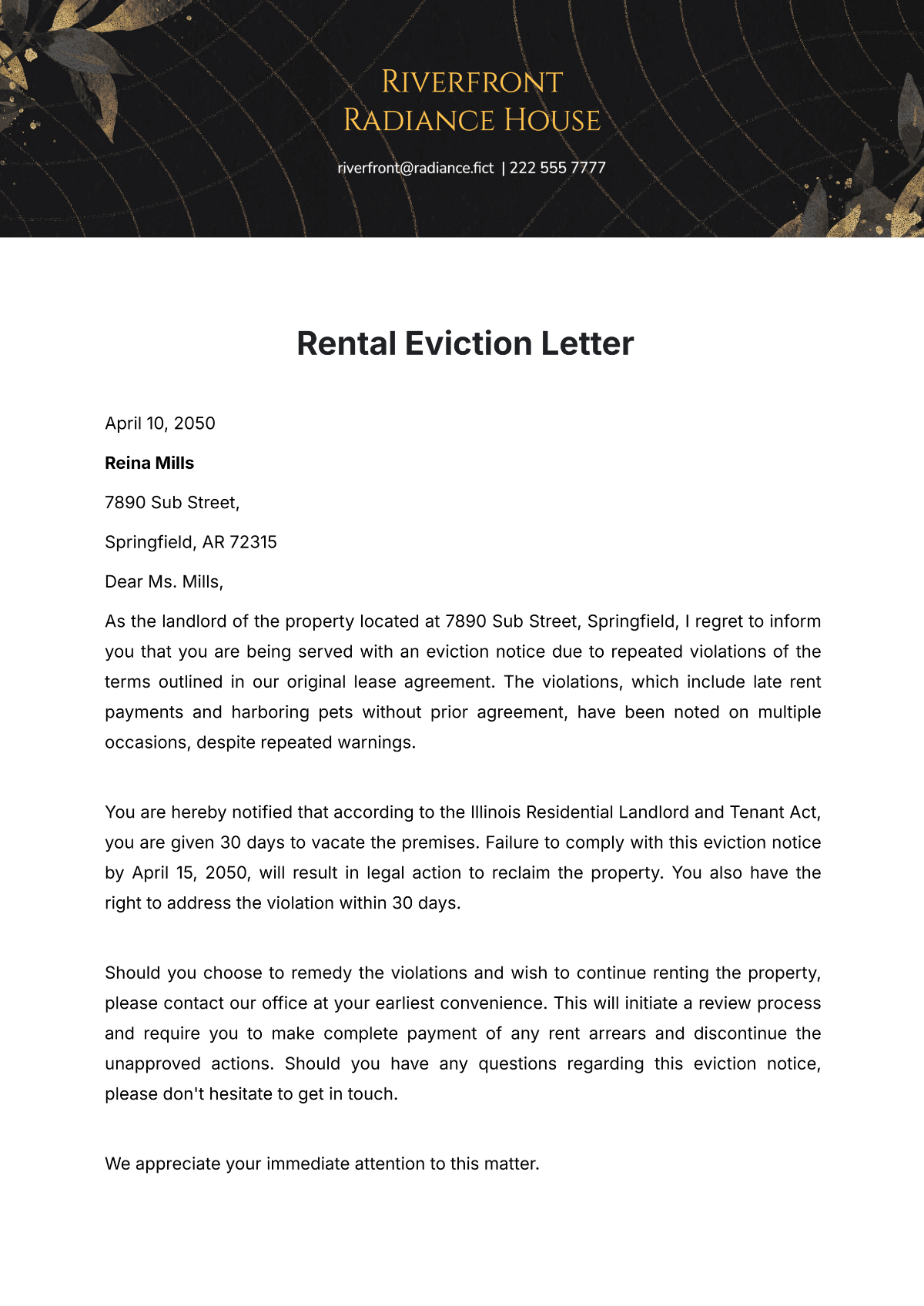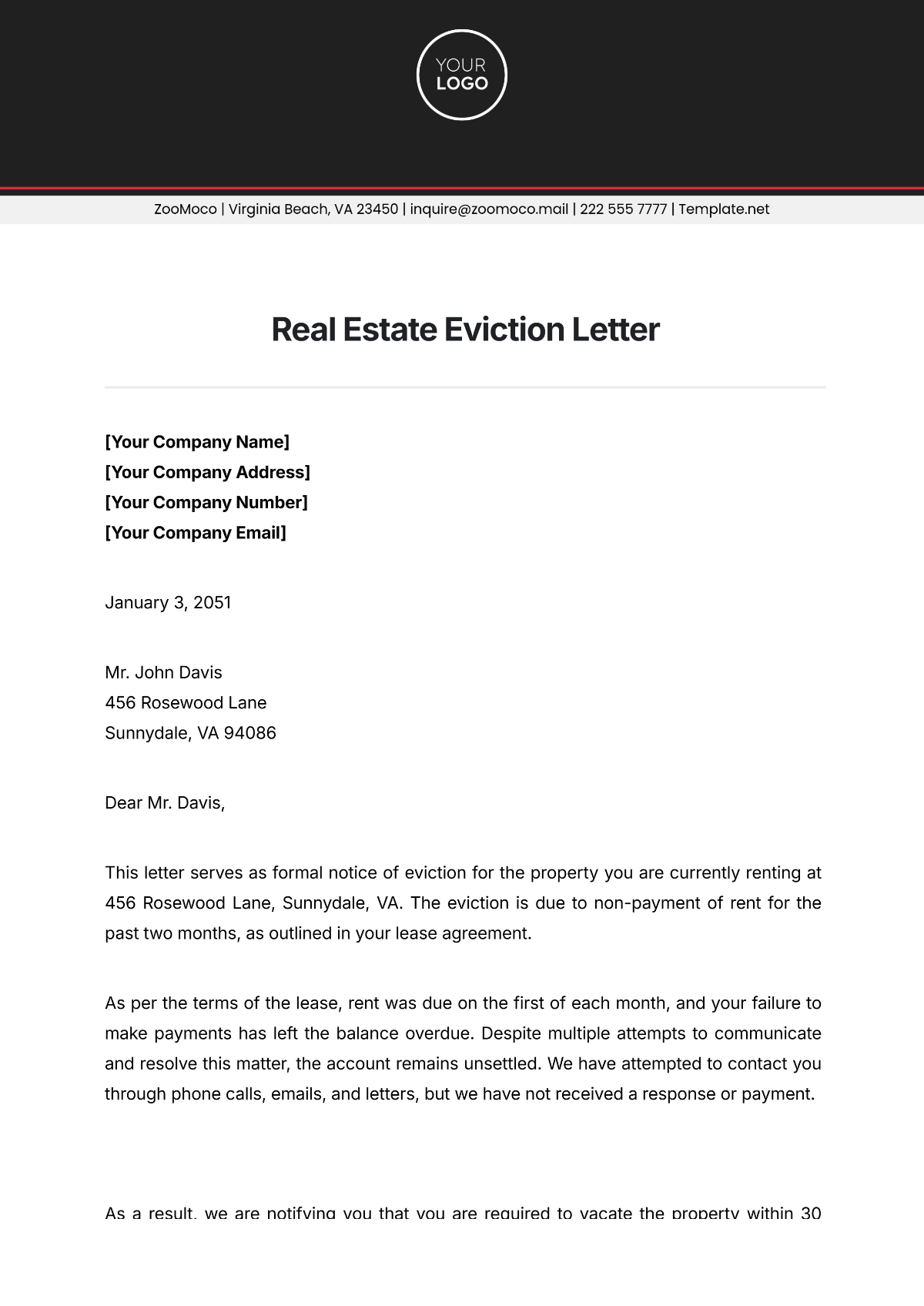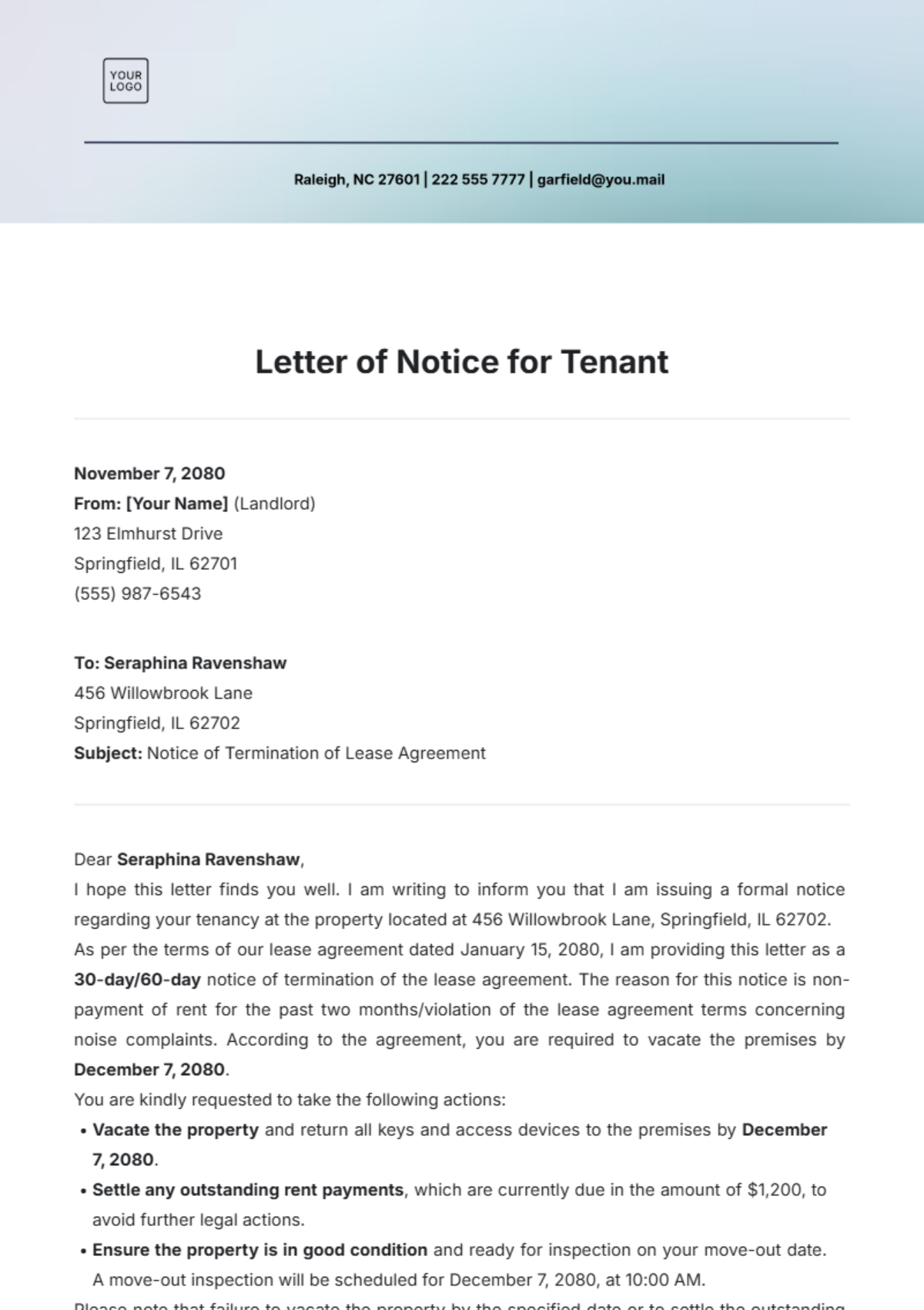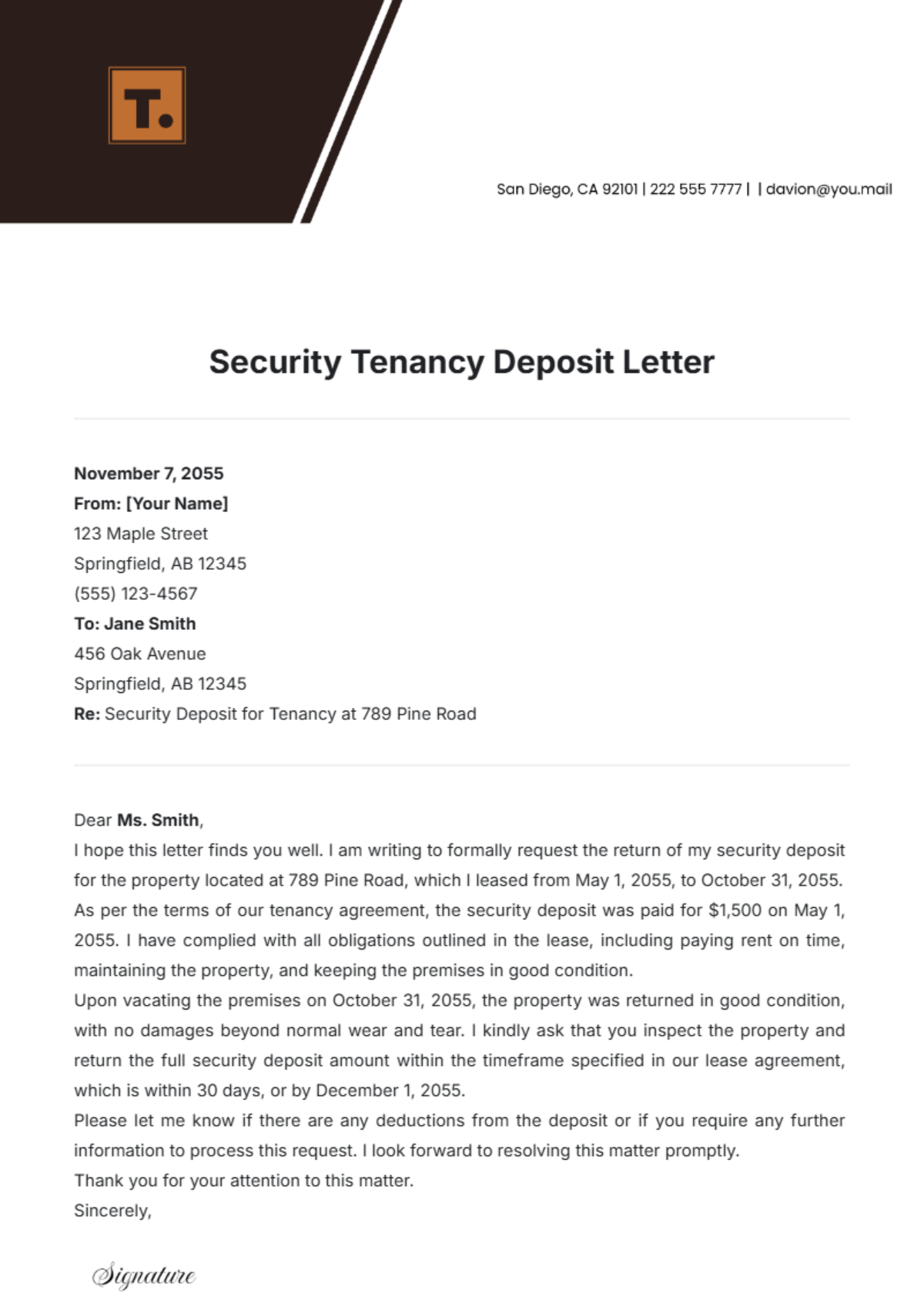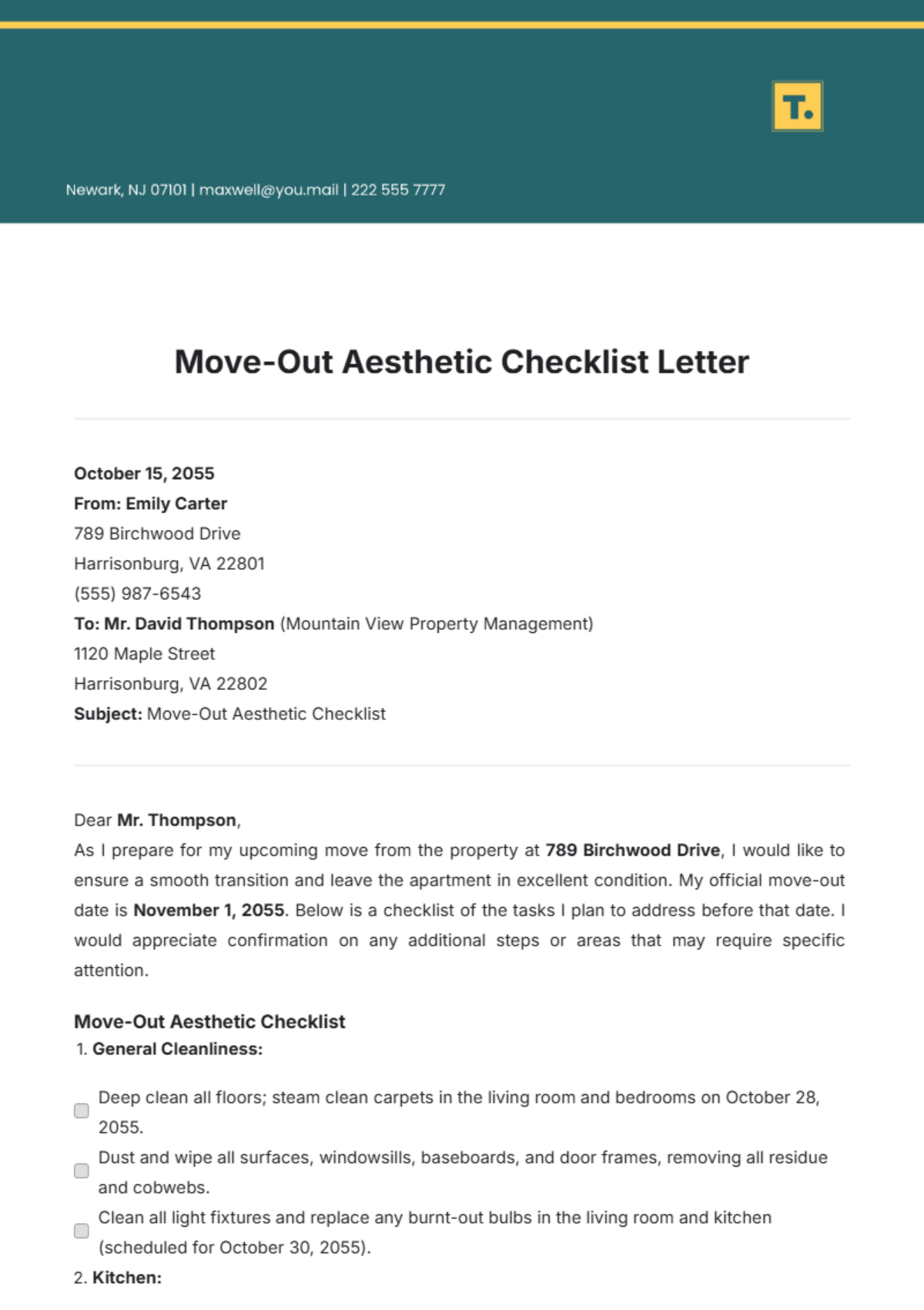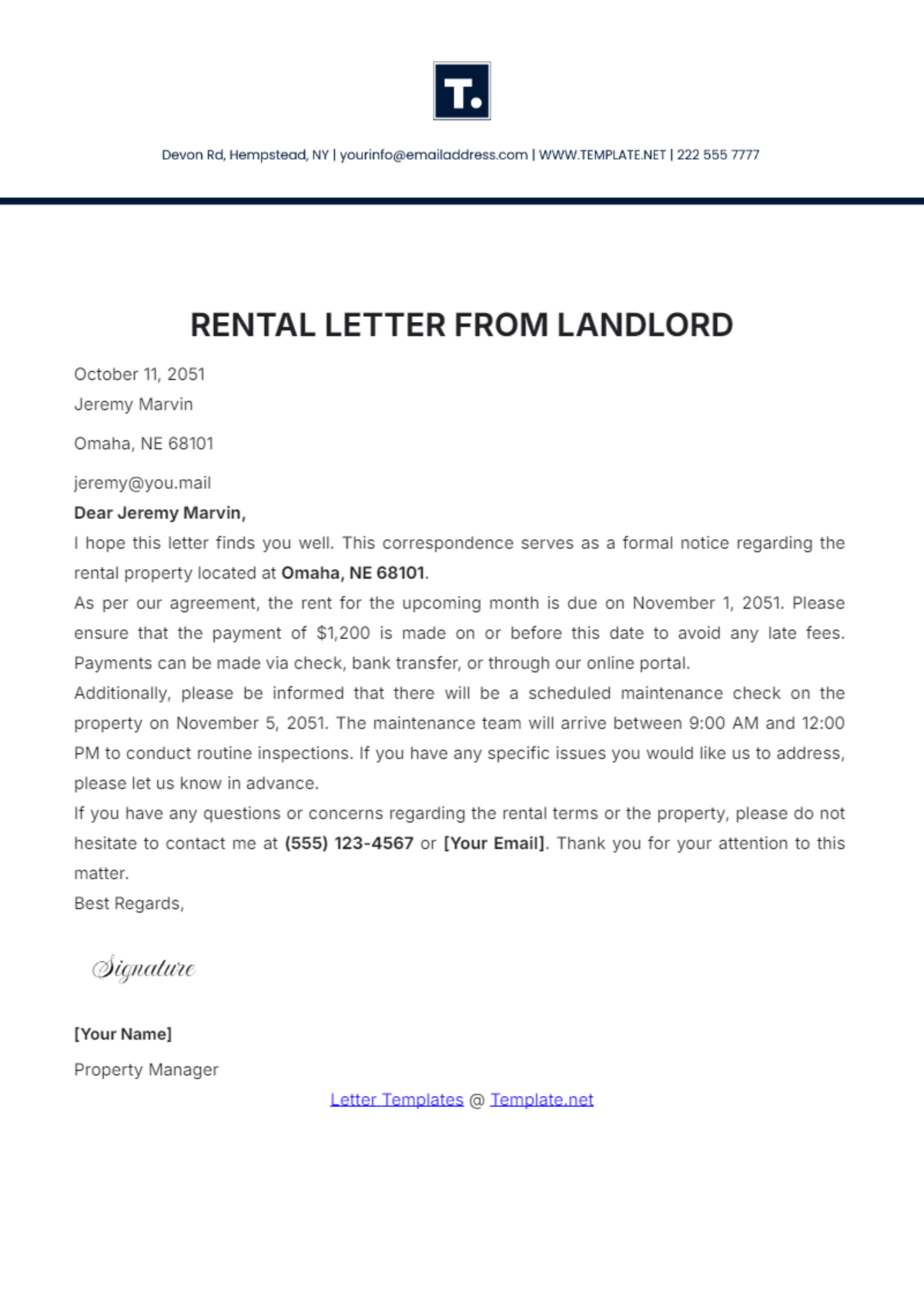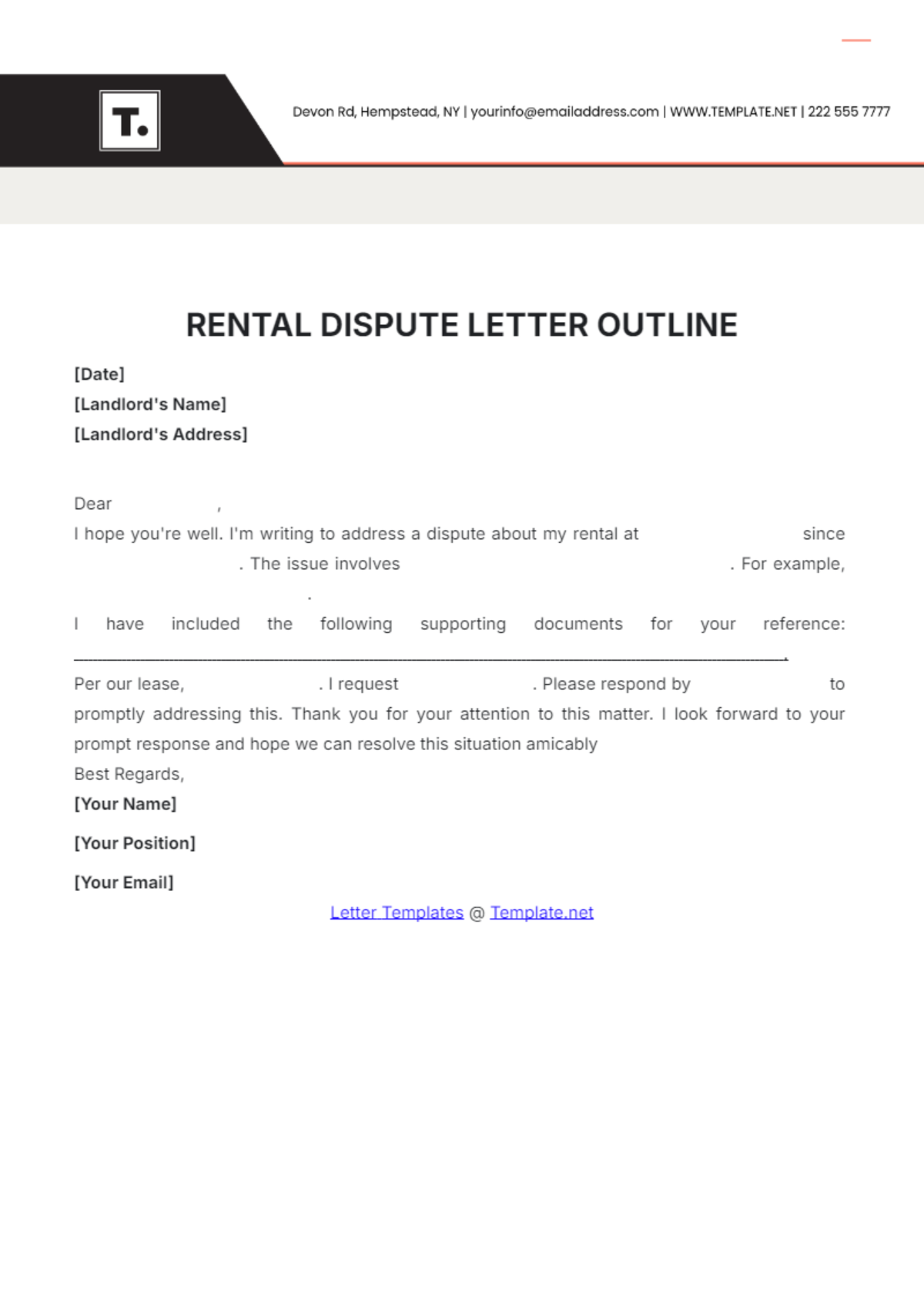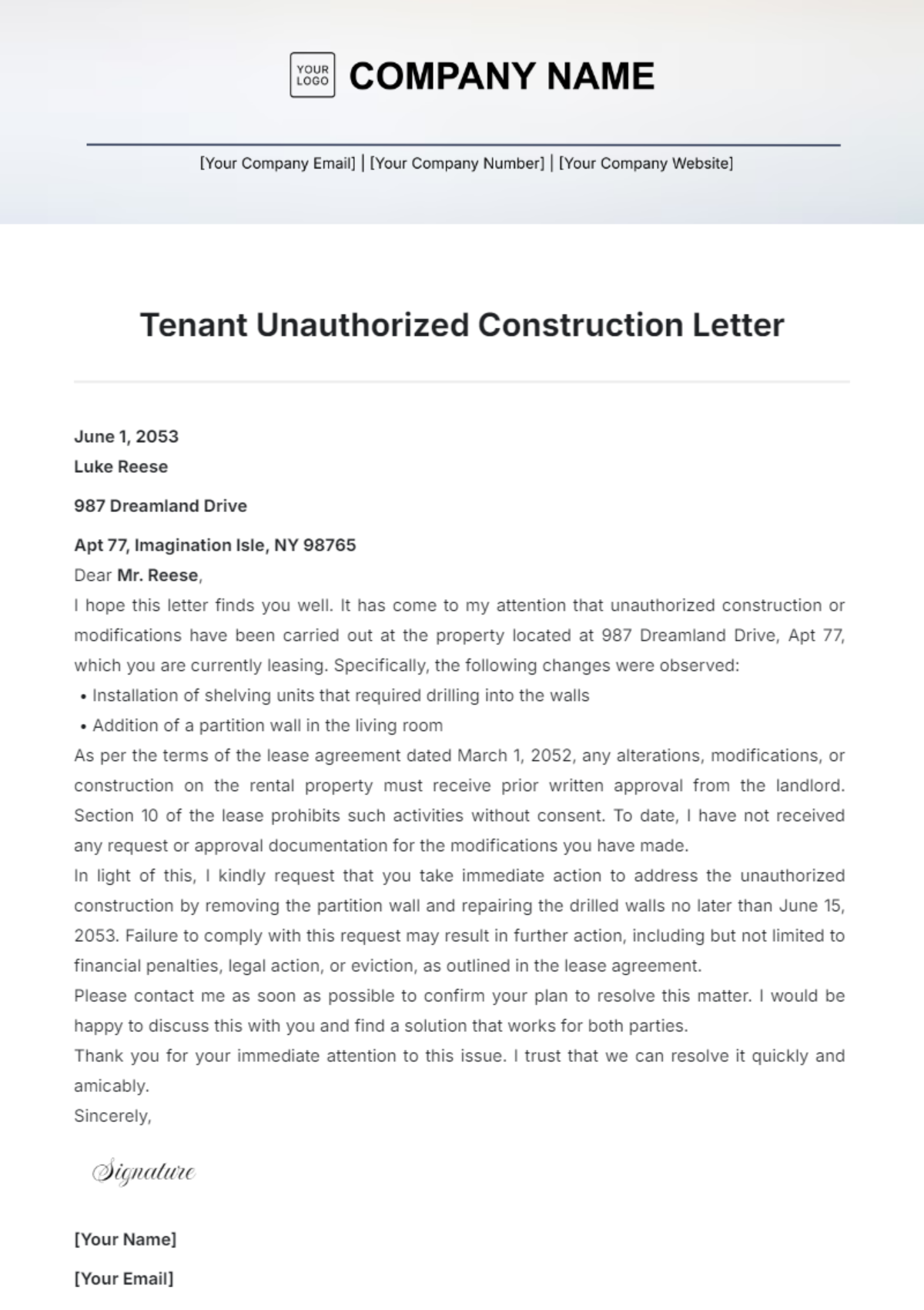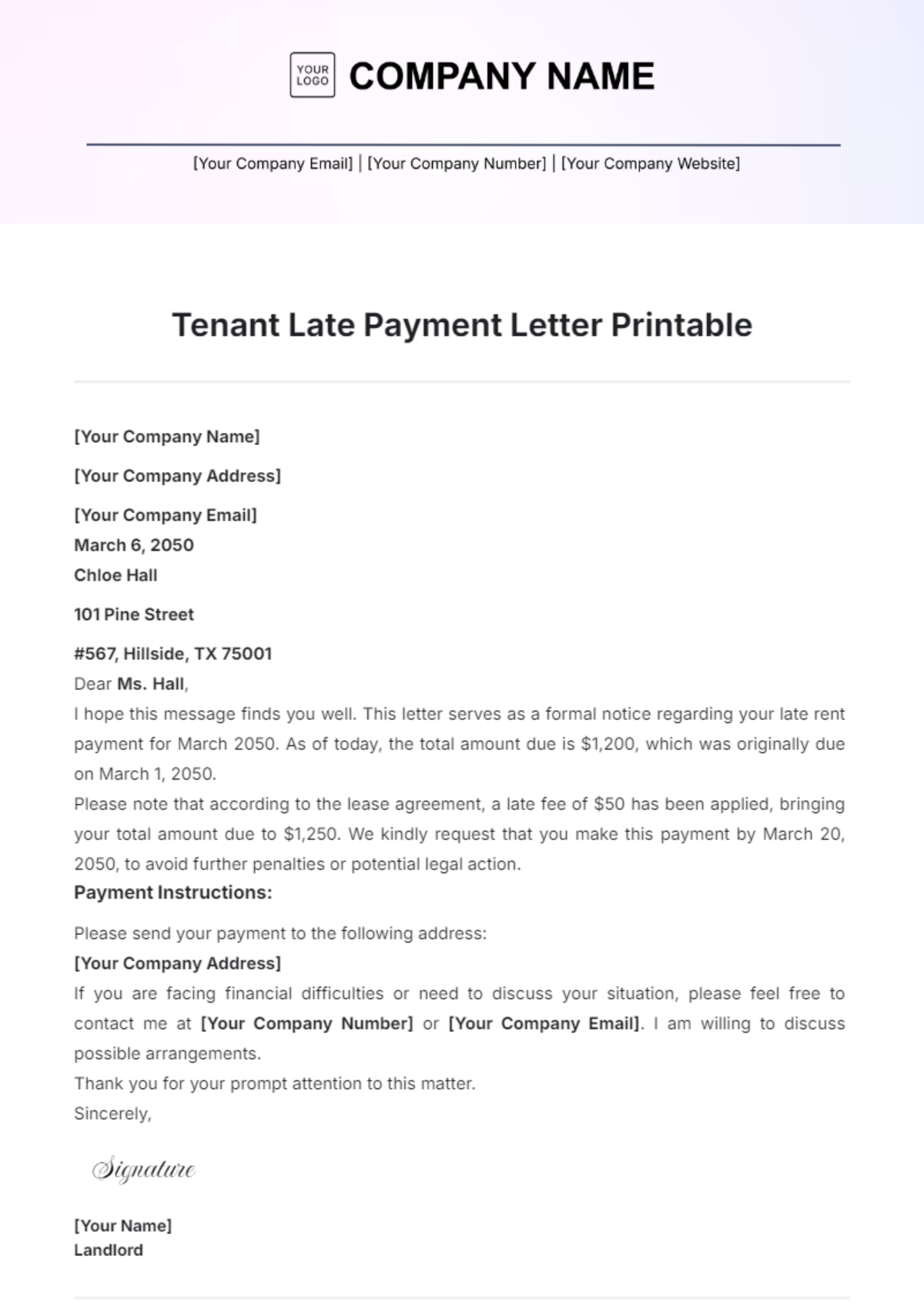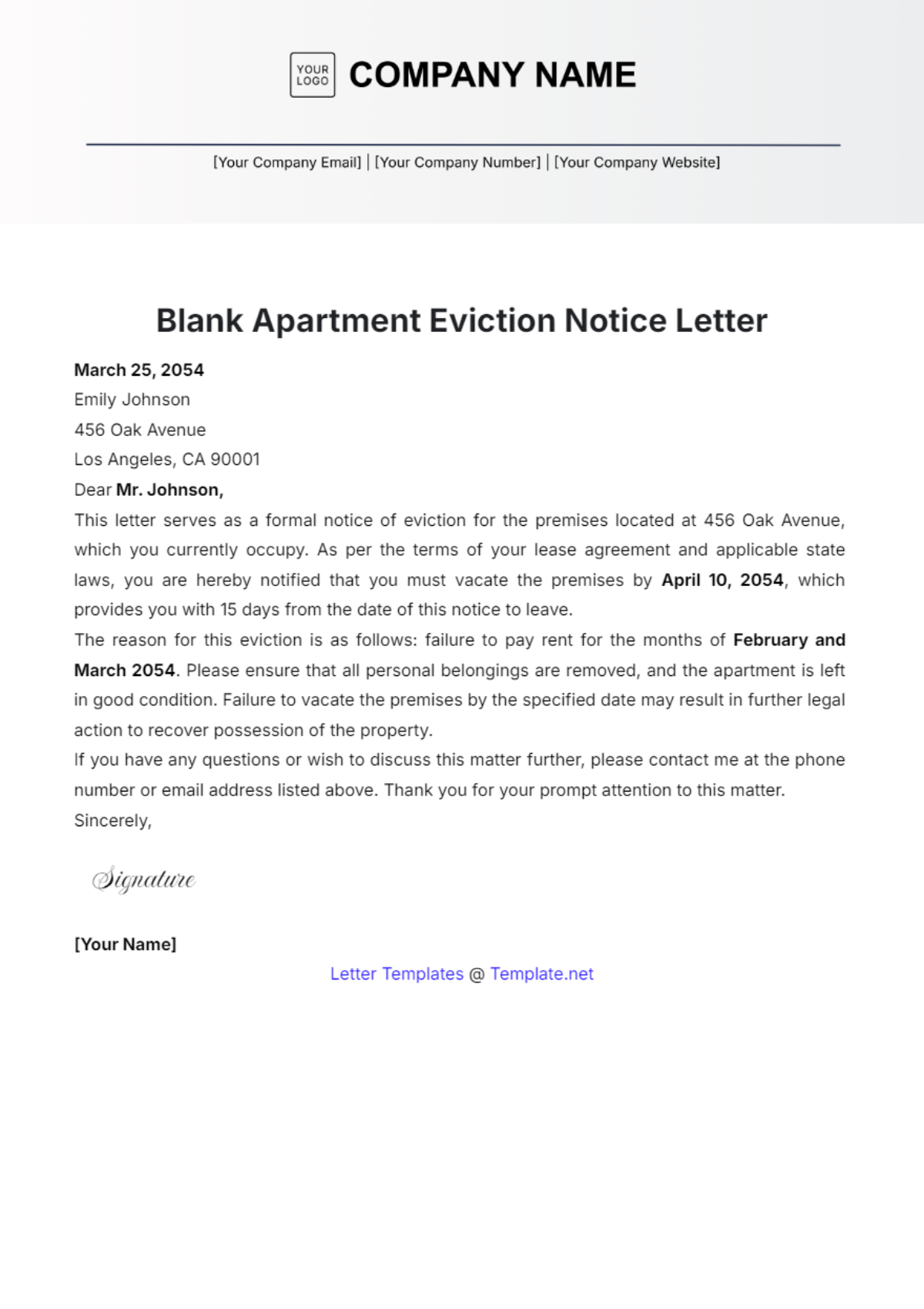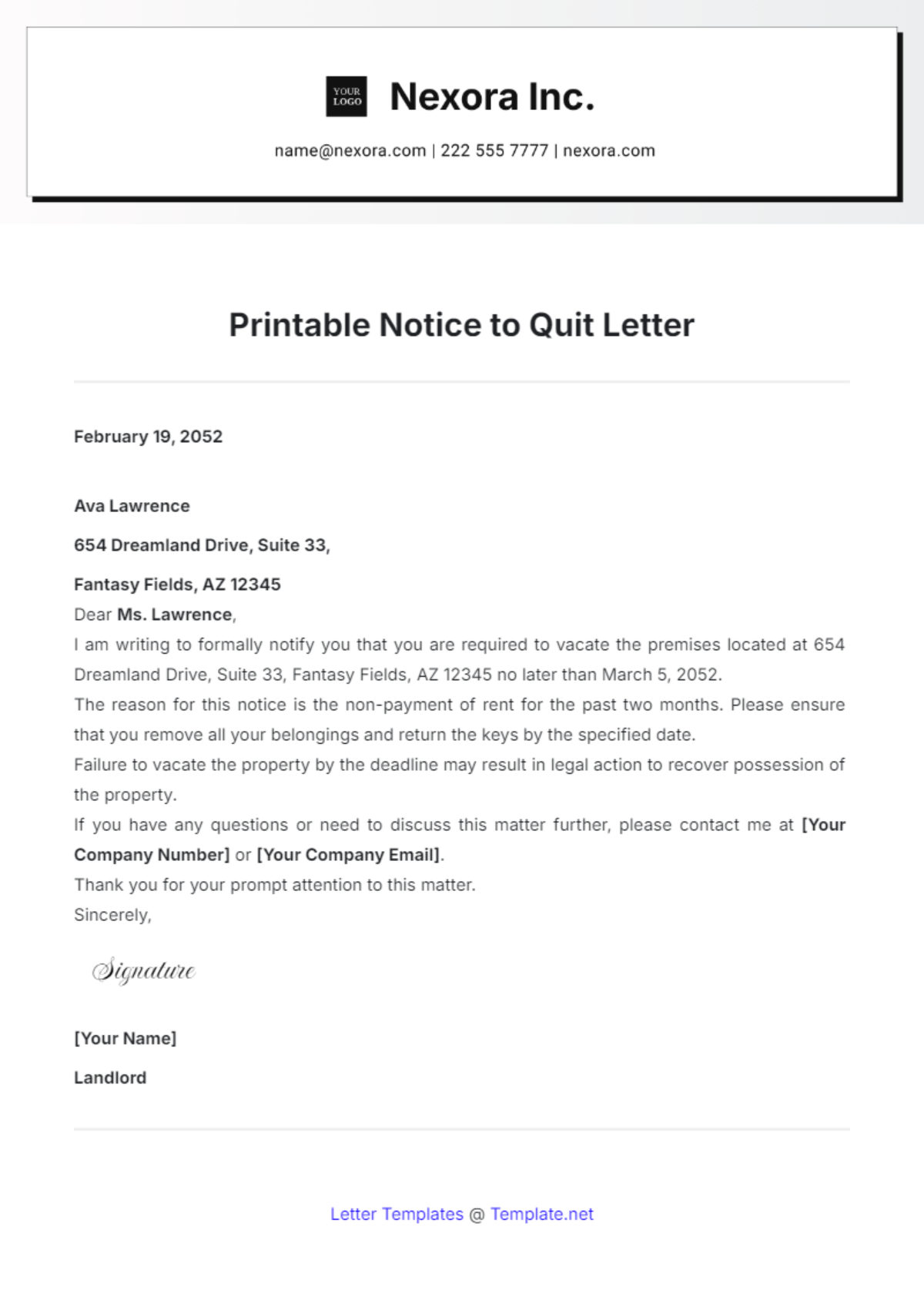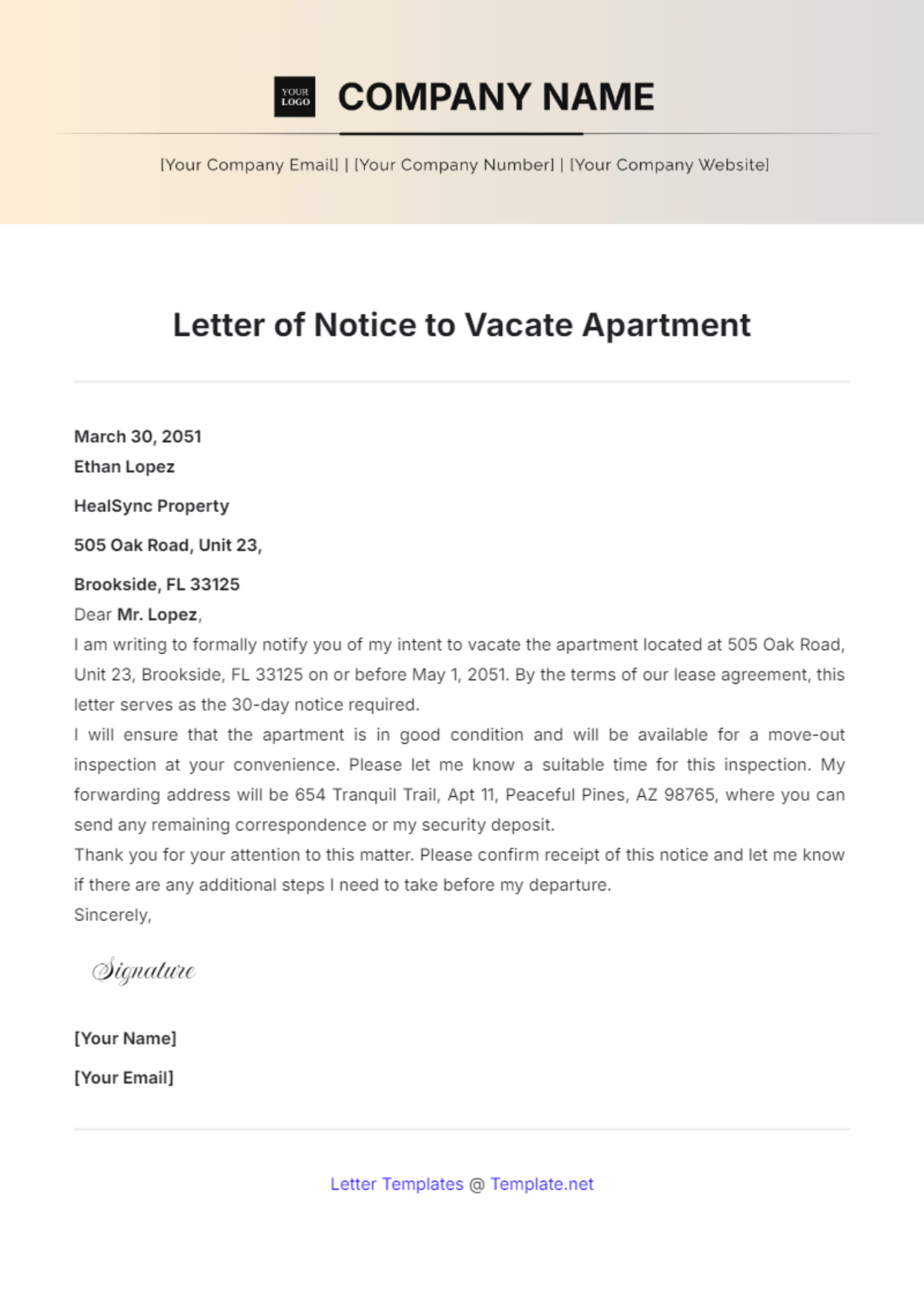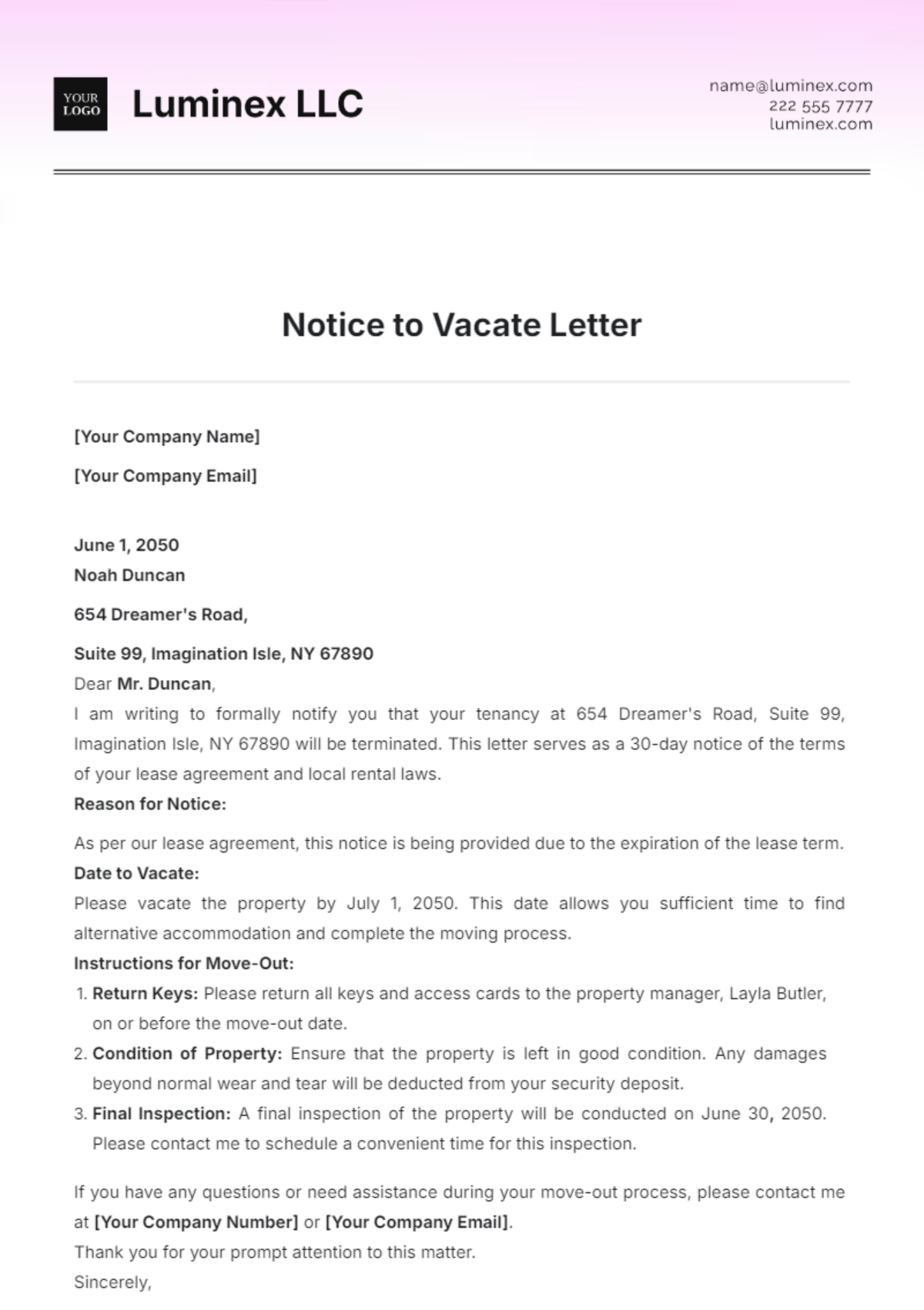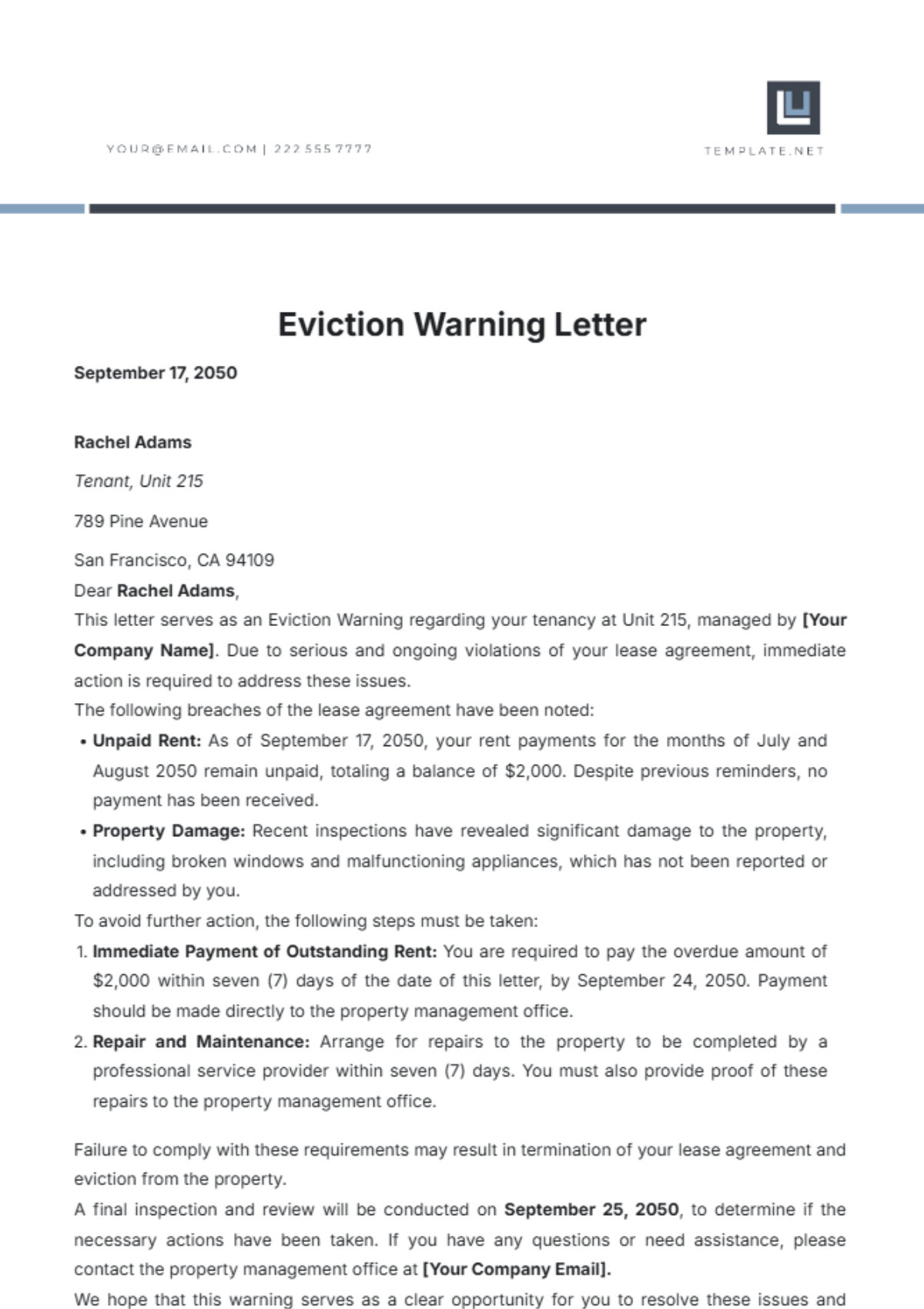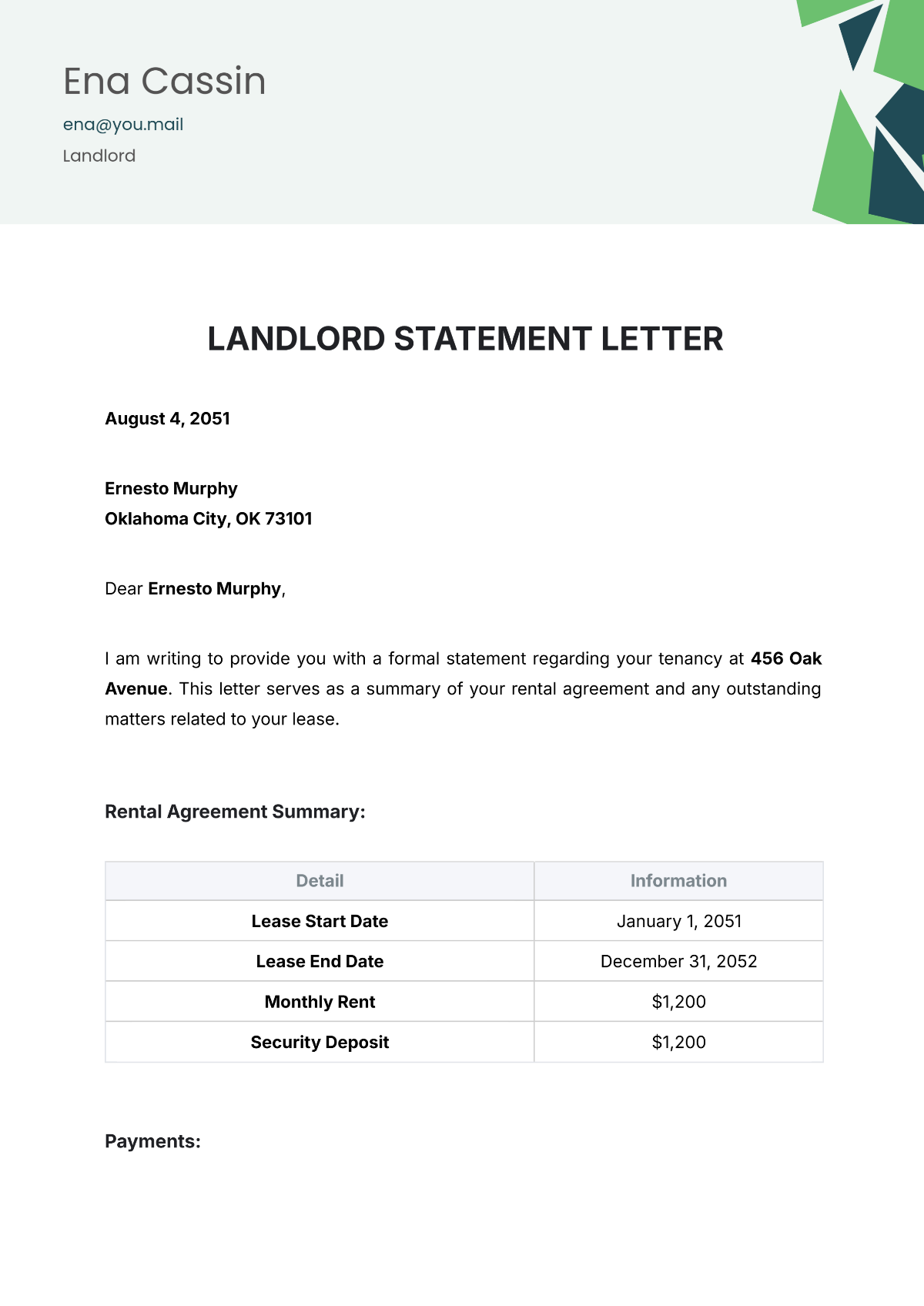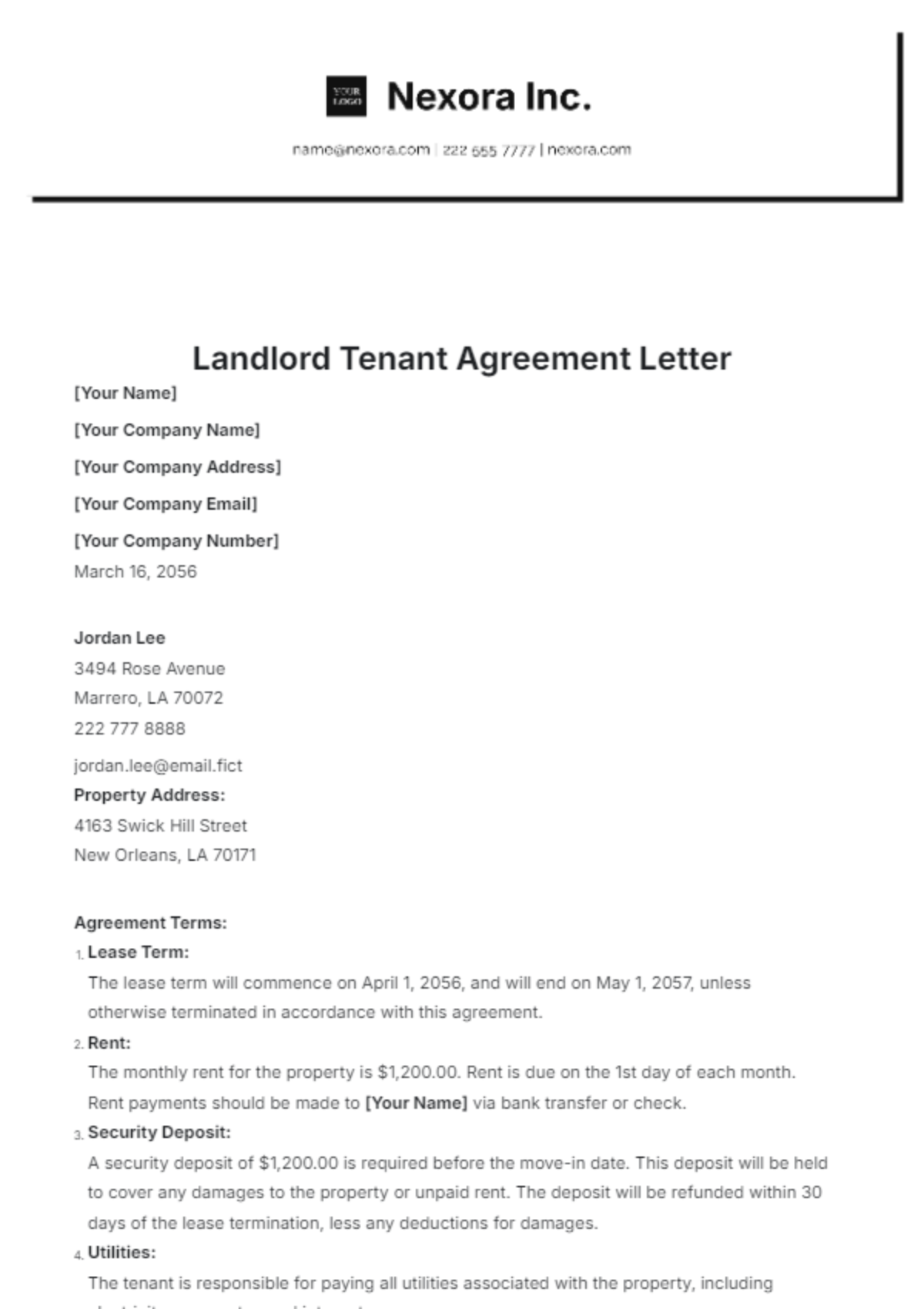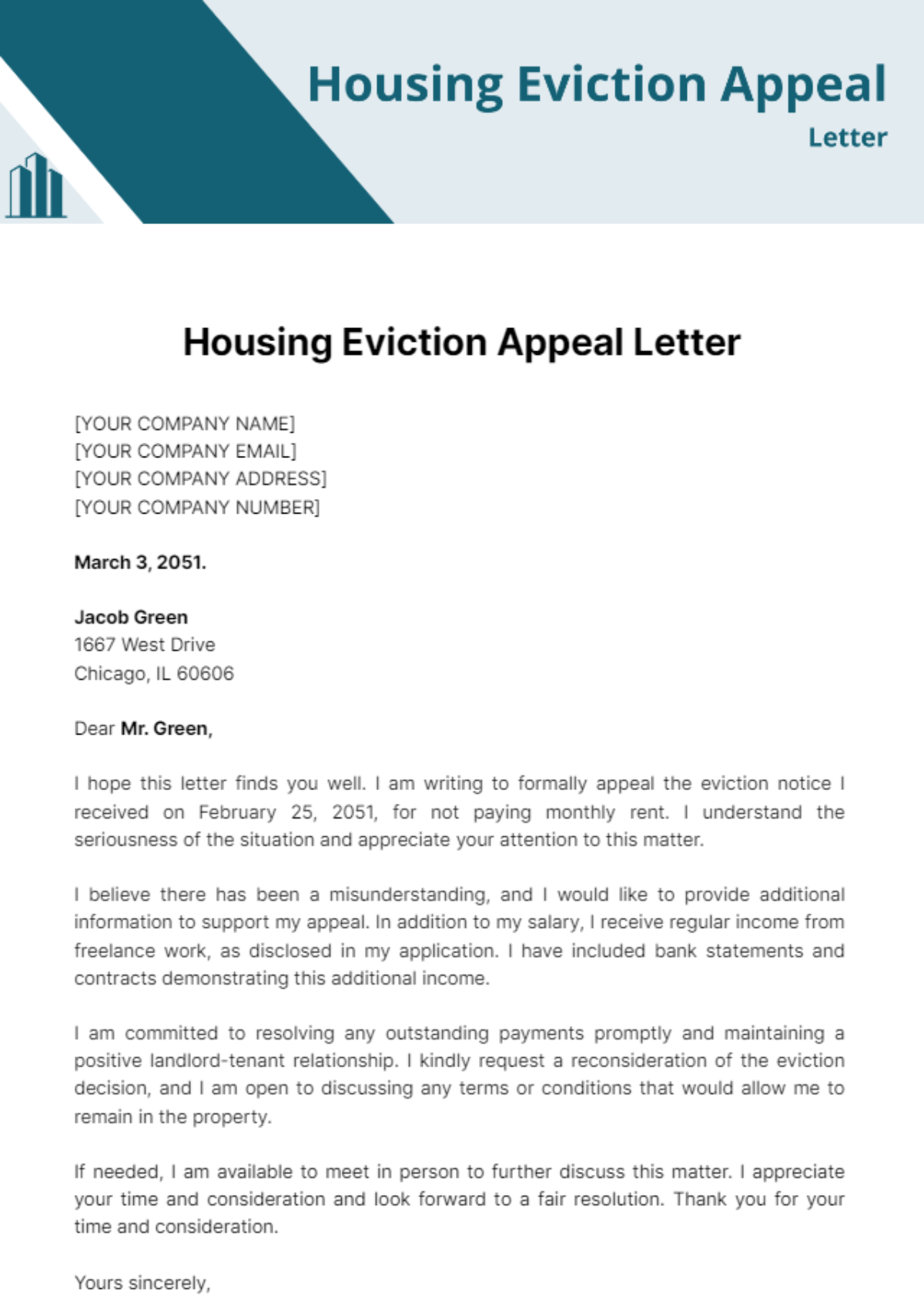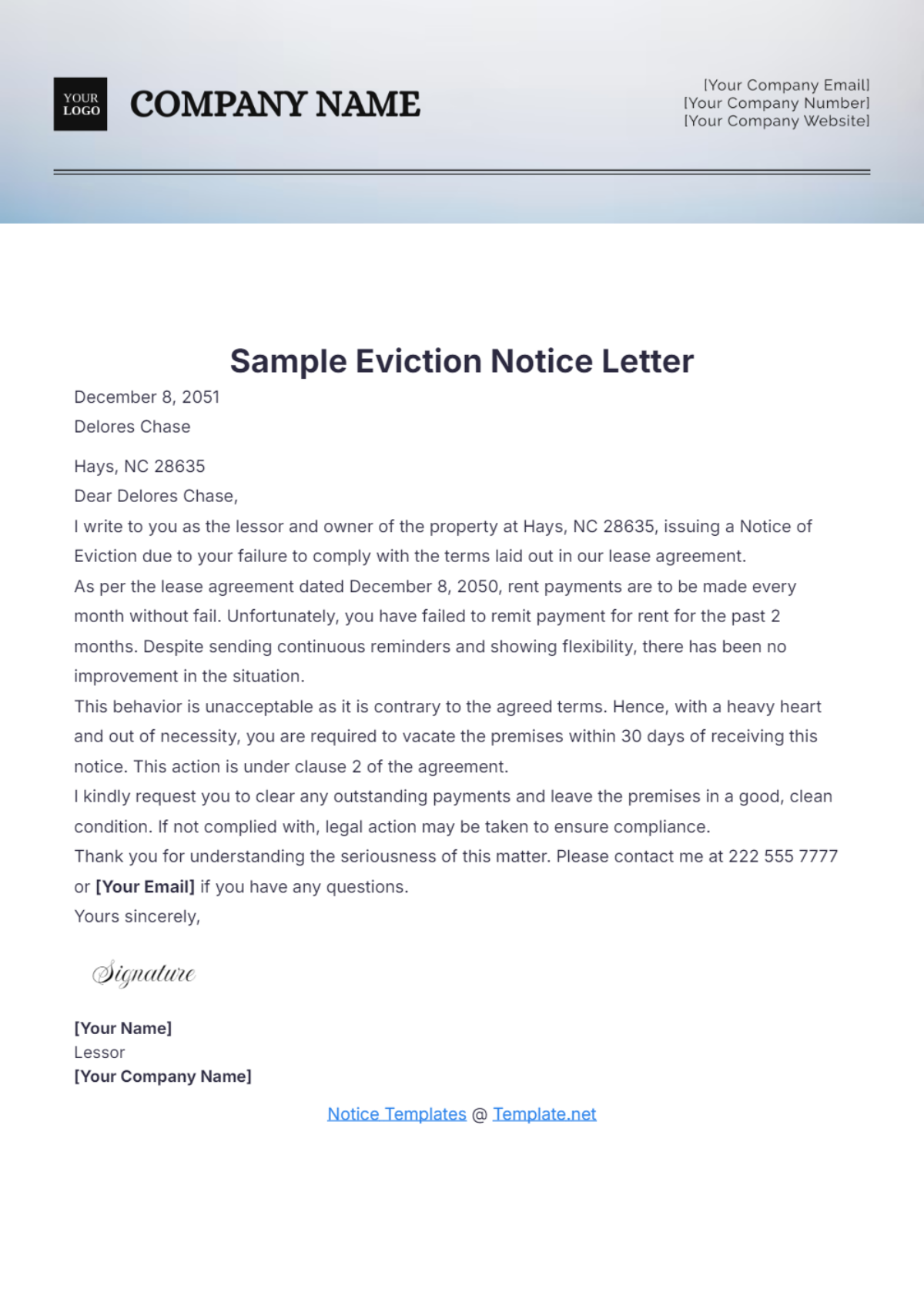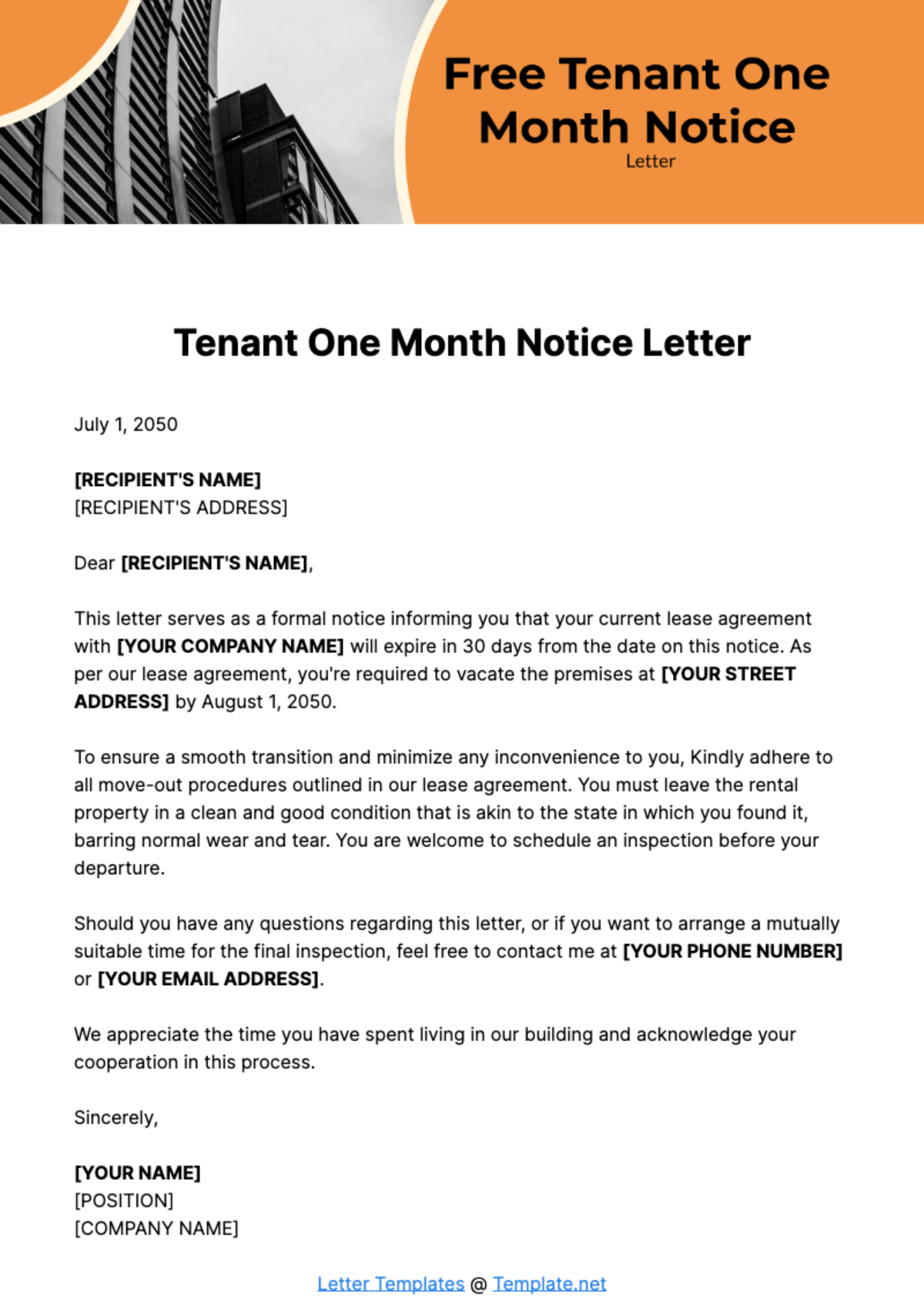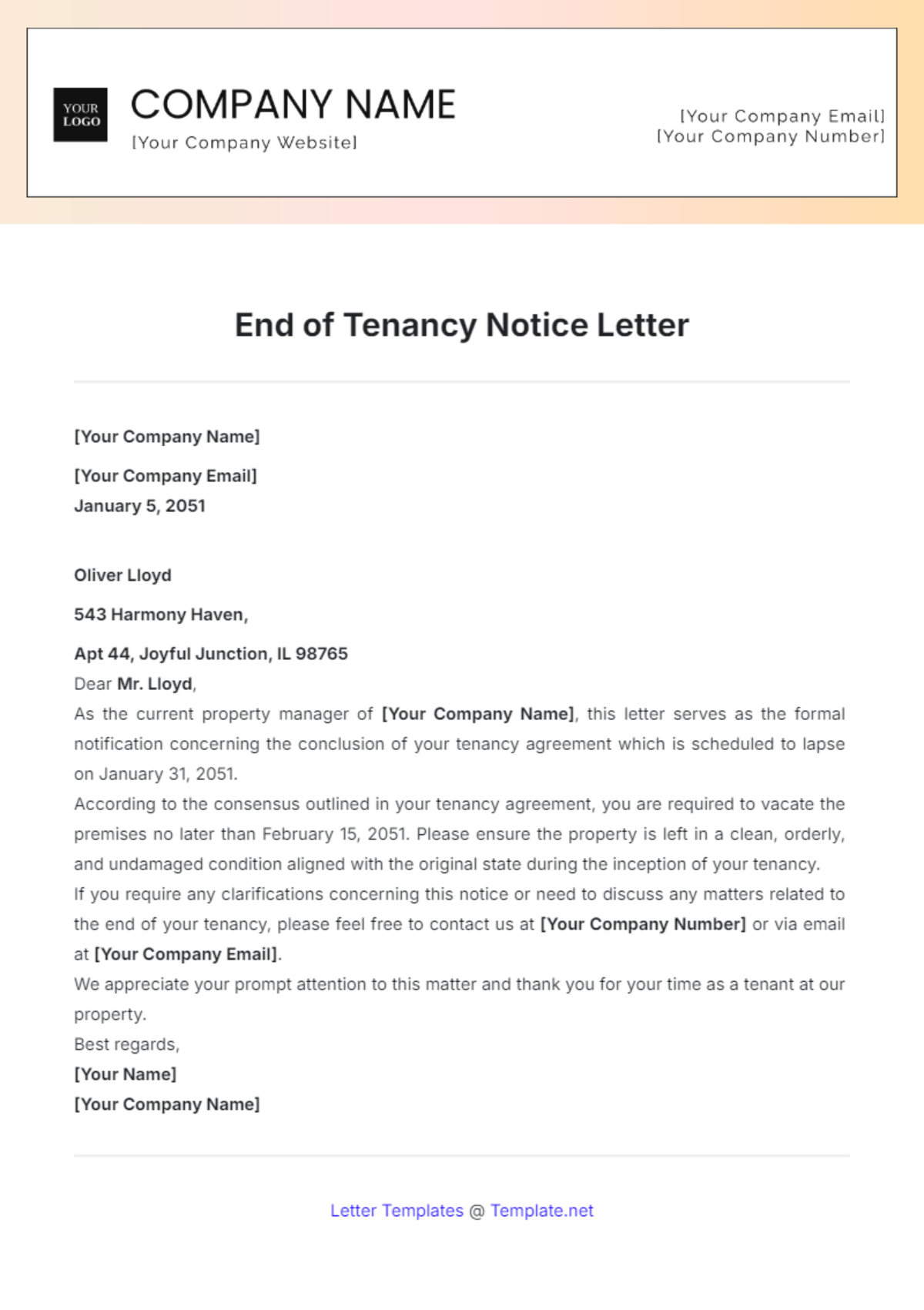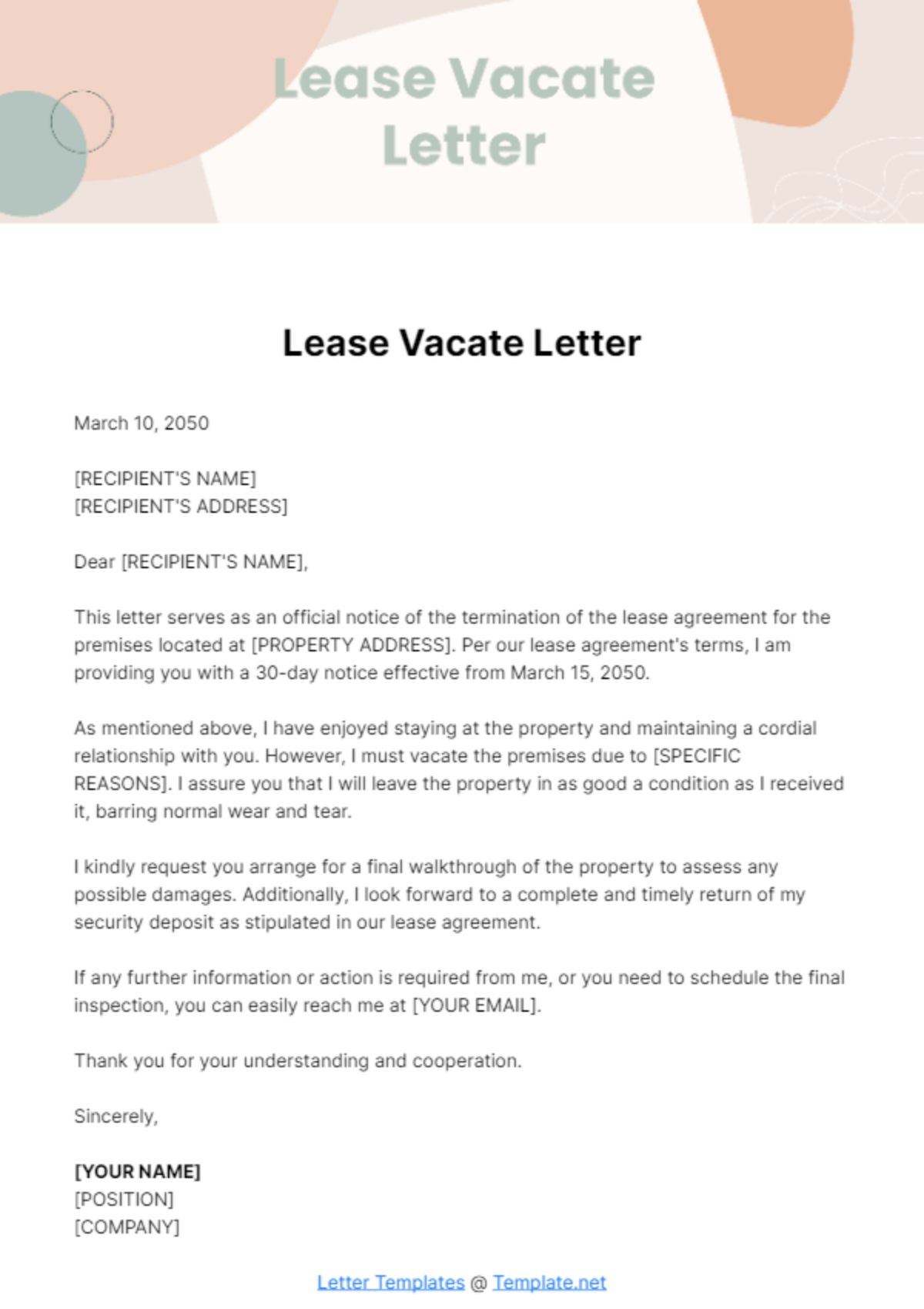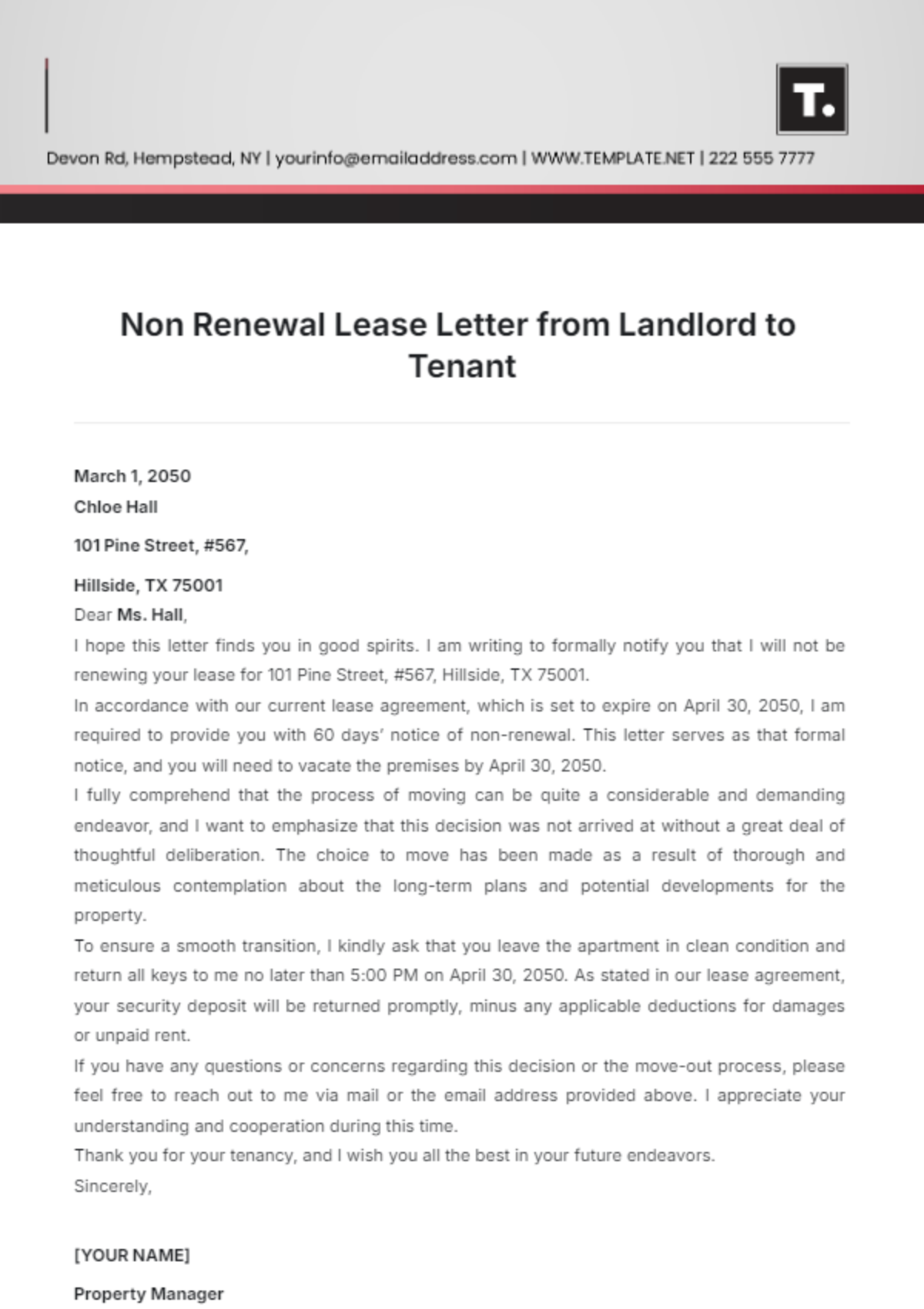Make your Communication to Life with Eviction Letter Templates from Template.net
Bring clarity and professionalism to your communication endeavors with Eviction Letter Templates from Template.net. Tailored for landlords, property managers, and legal advisors, these templates help you convey essential information efficiently and effectively. Keep your tenants informed, avoid misunderstandings, and maintain legal compliance with ease. Whether you need to notify a tenant about upcoming deadlines or legally outline eviction proceedings, these templates provide you with a solid foundation. Each template includes essential components like space for dates, tenant details, and legal statements to ensure your documents are both informative and compliant. No legal background is necessary—our user-friendly, customizable layouts are designed for straightforward editing, saving you time and hassle.
Discover the many Eviction Letter Templates we have on hand to suit any situation. Choose from a variety of professionally crafted templates, swap in your specific details, and tailor colors and fonts to match your brand or style. Enhance your letters with advanced touches such as dragging and dropping icons or adding AI-powered text suggestions for optimal impact. Enjoy a fun and frictionless experience as you explore endless possibilities without needing legal expertise. Our library is regularly updated with contemporary designs to meet evolving needs. Once your eviction letter is polished to perfection, download it for print, share via email, or export it in your preferred format, ensuring seamless communication across multiple channels.
